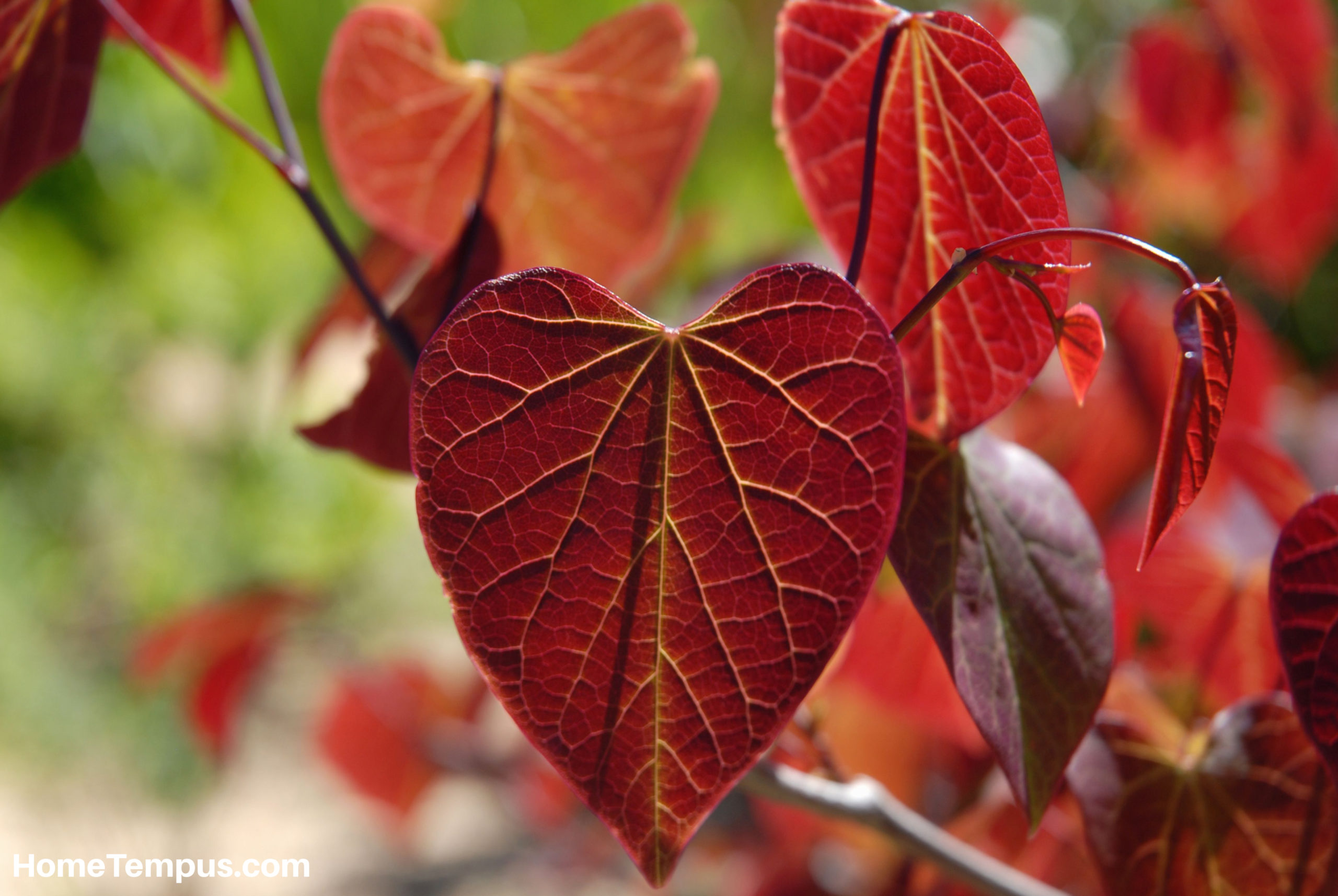I found myself thinking about flowers that start with C when I started planning my garden this spring. It is important to understand which flowers will do best for your climate because that ensures success when planting.
I have constructed this list of my favorite flowers that start with C that will hopefully help you.
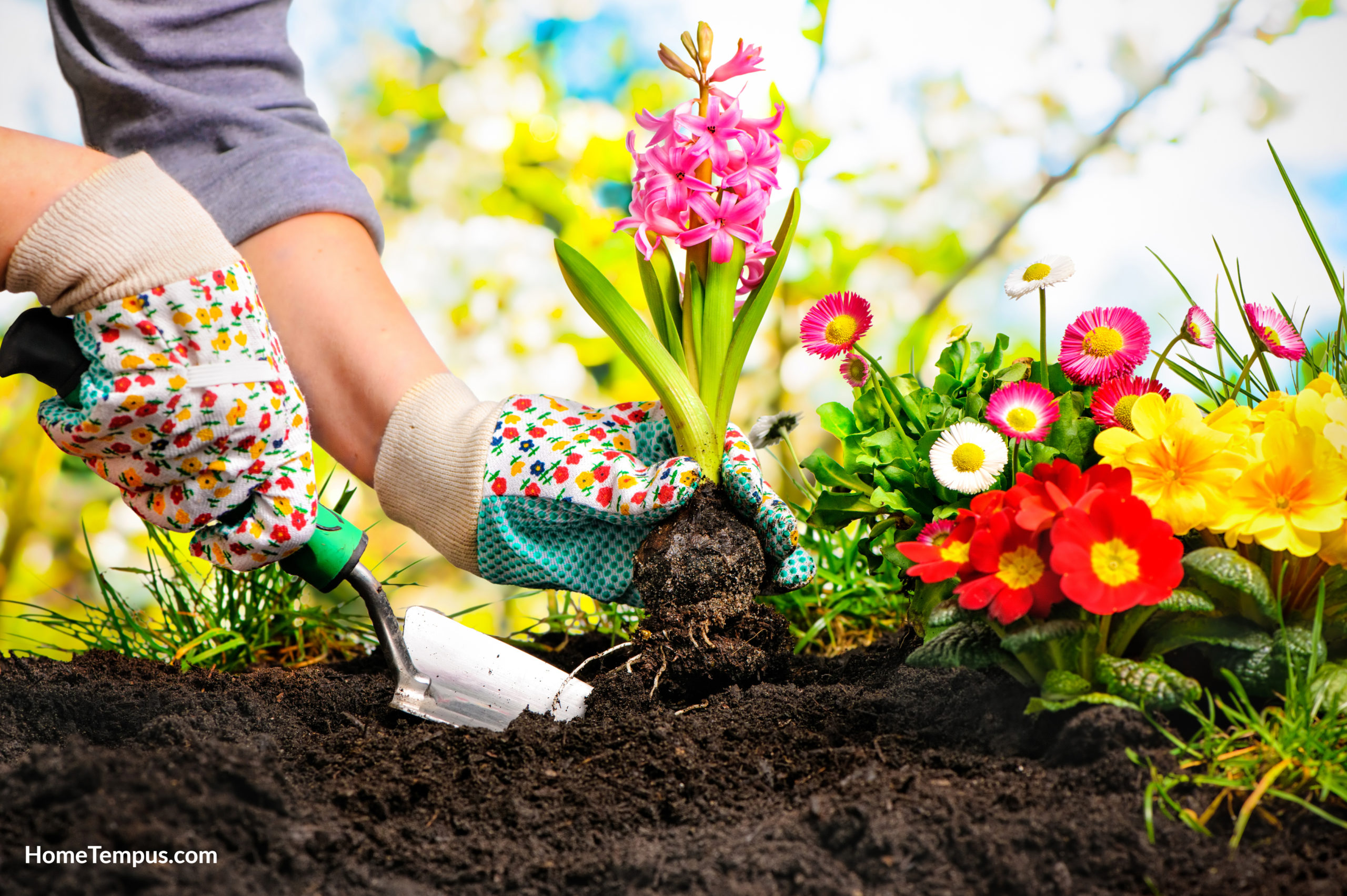
Names of Flowers that Start with C:
There are so many flowers that start with C to get through that it’s easier to group them by letter.
So, I have constructed this list using the common names of the flowers that start with C, not the scientific names.
1. Calendula (Calendula Officianalis)
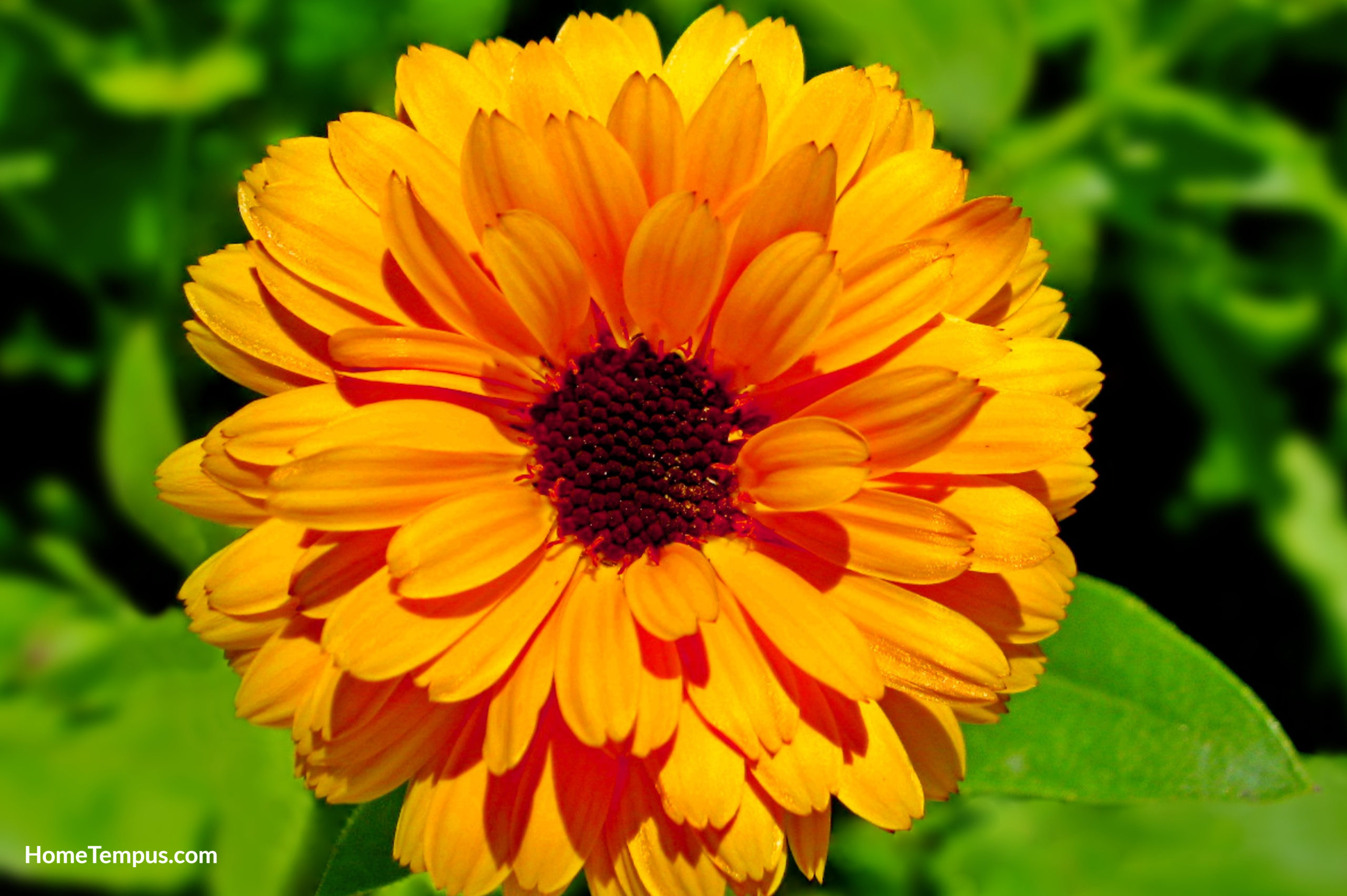
Calendula is also known as marigold and is a medicinal and culinary plant and is known for boosting the immune system. You can use the bright orange petals to dye cheese and butter.
Or, when fed to backyard chicken flocks, it will result in bright orange yolks.
Water: 1 – 1 ½ inch of water per week
Sun: Full to partial sun
Soil pH: Well-drained, moderately nutrient-rich soil; pH: 6 – 7
2. Calico Cactus (Echinocereus engelmannii)
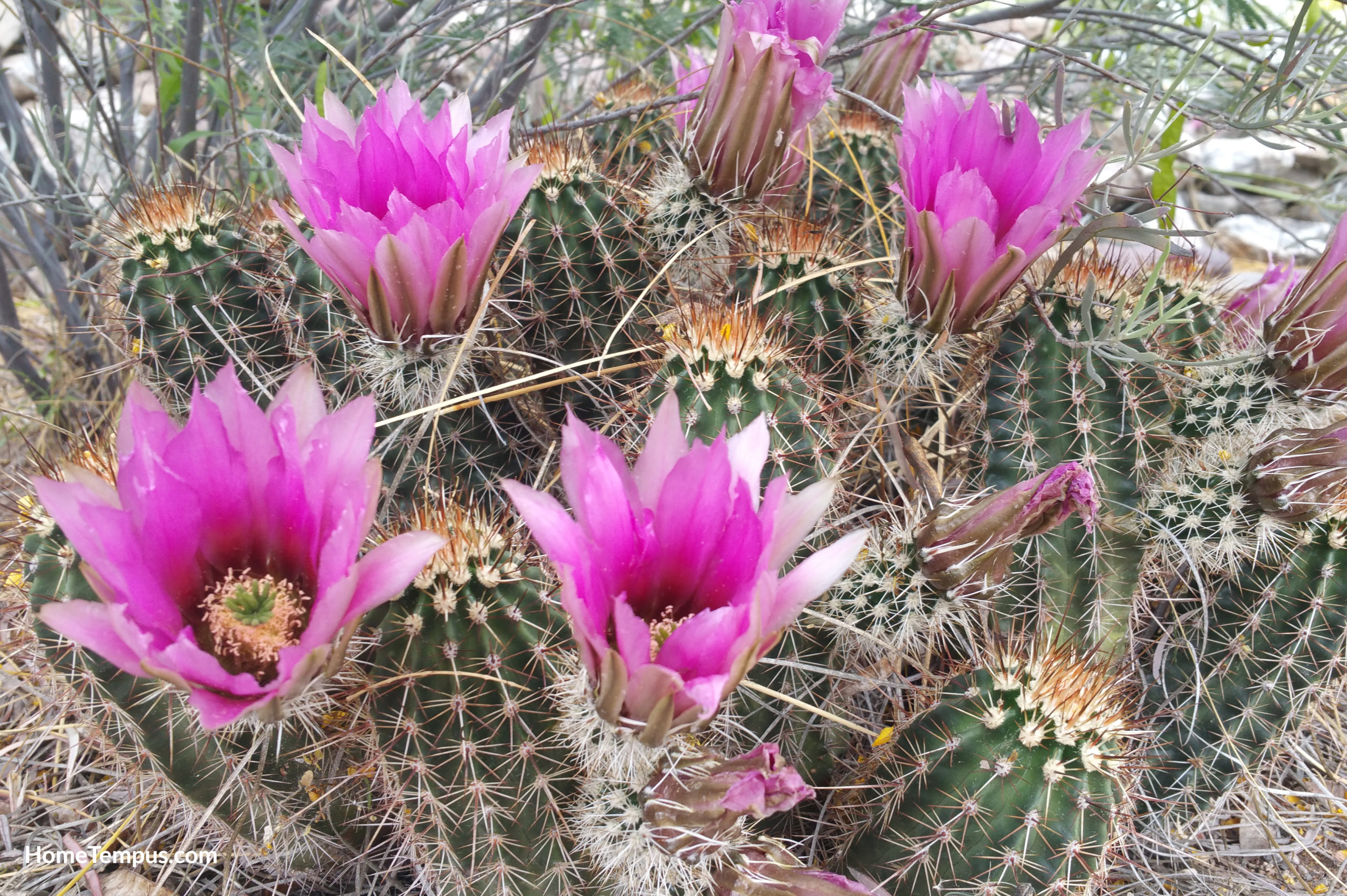
The Calico Cactus is often found in desert areas in southwest America and Mexico. The plant tends to grow in clusters and the flowers are bright purple and bloom from April to late May.
Because this cactus likes dry and rocky soil it is therefore easy to care for once established.
Water: Water maximum once a month
Sun: Full sun
Soil pH: Dry and rocky; pH: 5 – 6.5
3. California Flannelbush (Fremontodendron californicum)
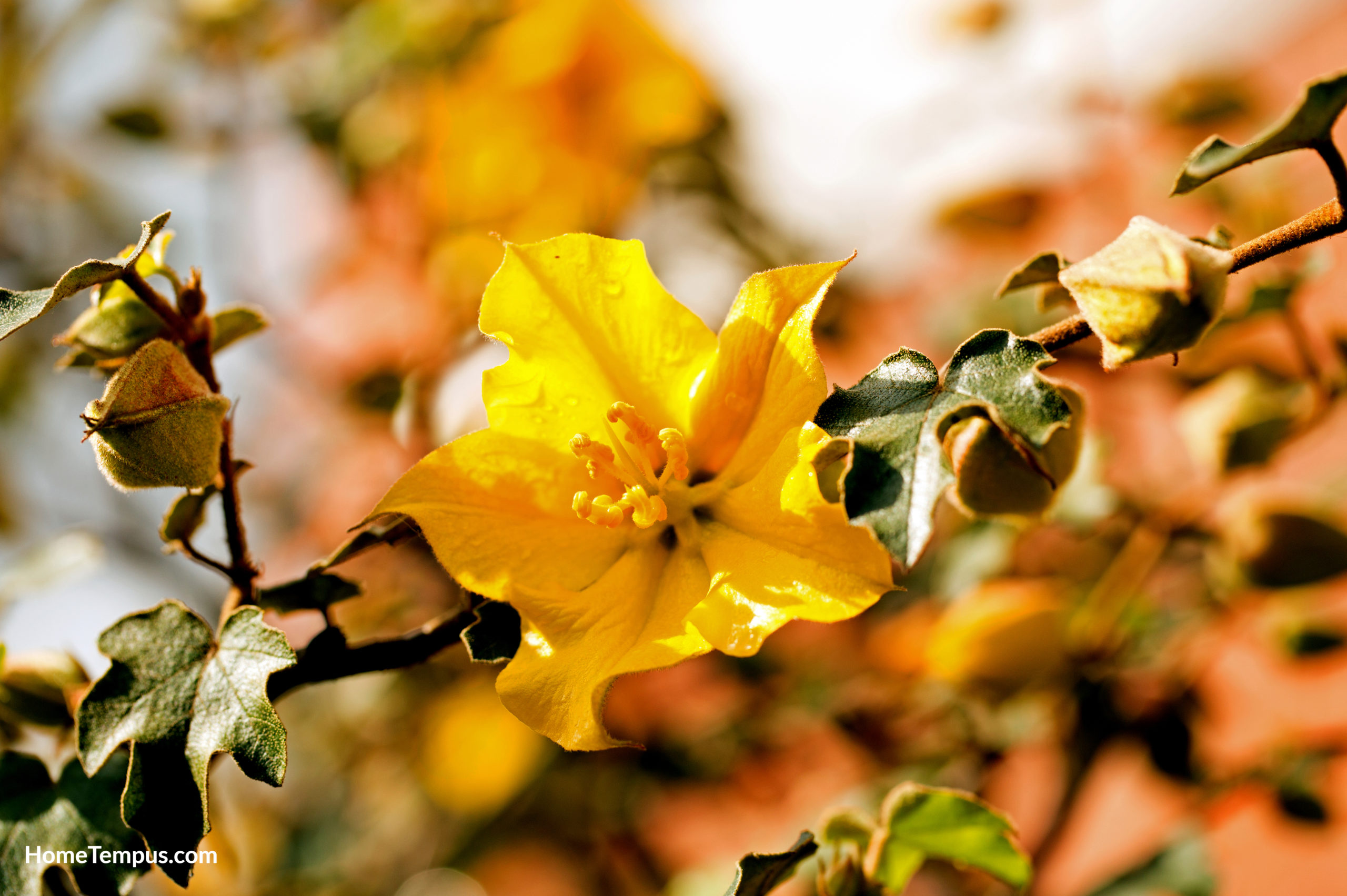
This spectacular native Californian shrub boasts evergreen foliage and it has abundant, big yellow flowers in the spring. So, if you have space, this plant is perfect because they grow to be 20 feet tall and 20 feet wide.
However, it is good to remember that they grow best about 10 feet from an irrigated or otherwise moist area.
Water: NB: Do not water during the summer!
Sun: Full sun
Soil pH: Neutral, alkaline, or acidic
4. Calla Lily (Zantedeschia aethiopica)
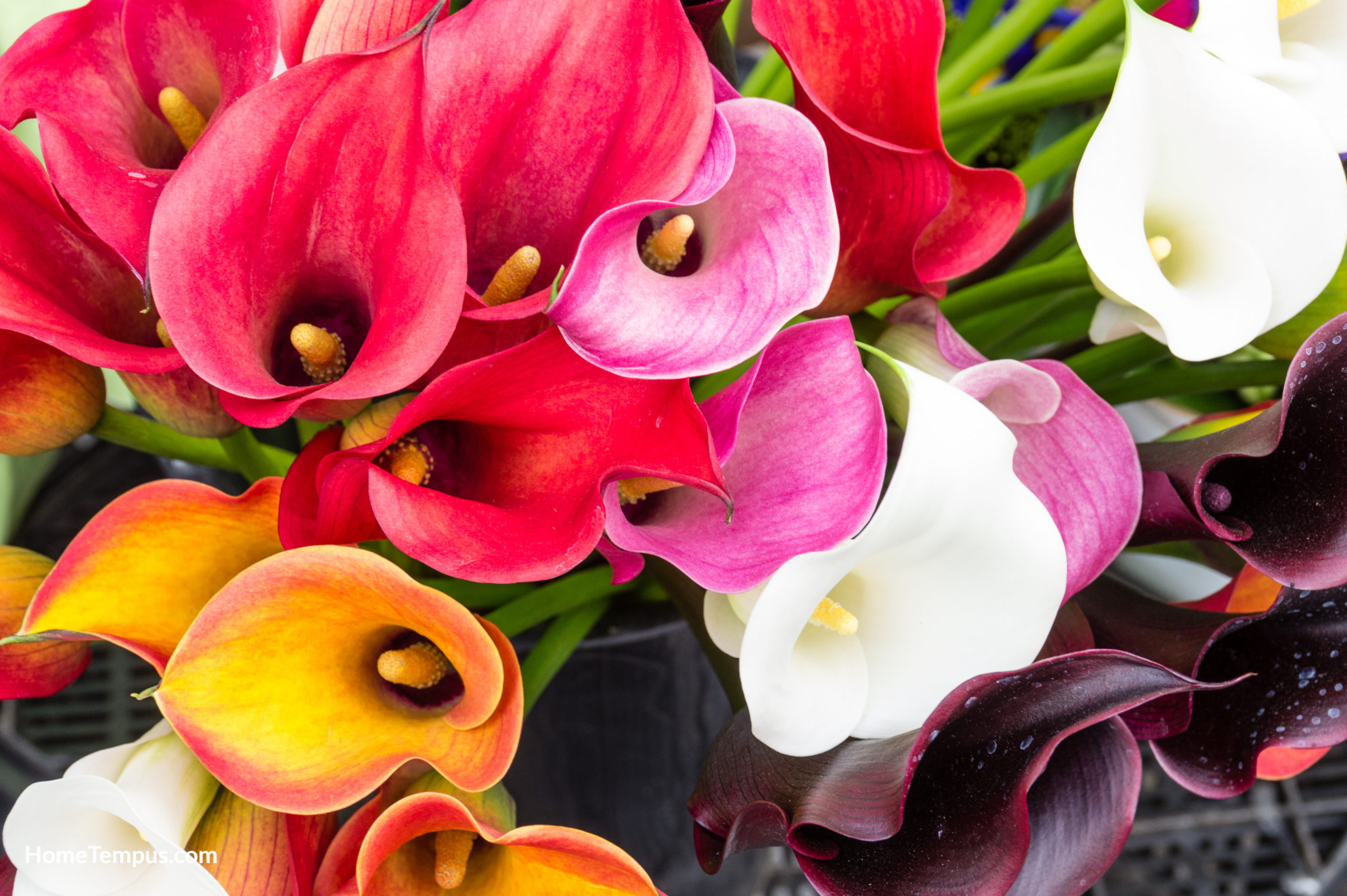
Calla lilies are beautiful either indoors or outdoors and they produce flowers in an array of colors. These plants grow well and don’t need too much maintenance, but they love wet conditions.
However, if you keep these flowers outdoors, remember to water them well and often.
Water: Keep soil moist and soggy
Sun: Partial shade preferred in hotter areas, but can grow in full sun
Soil pH: 5.5 – 6
5. Camellia (Camellia japonica)
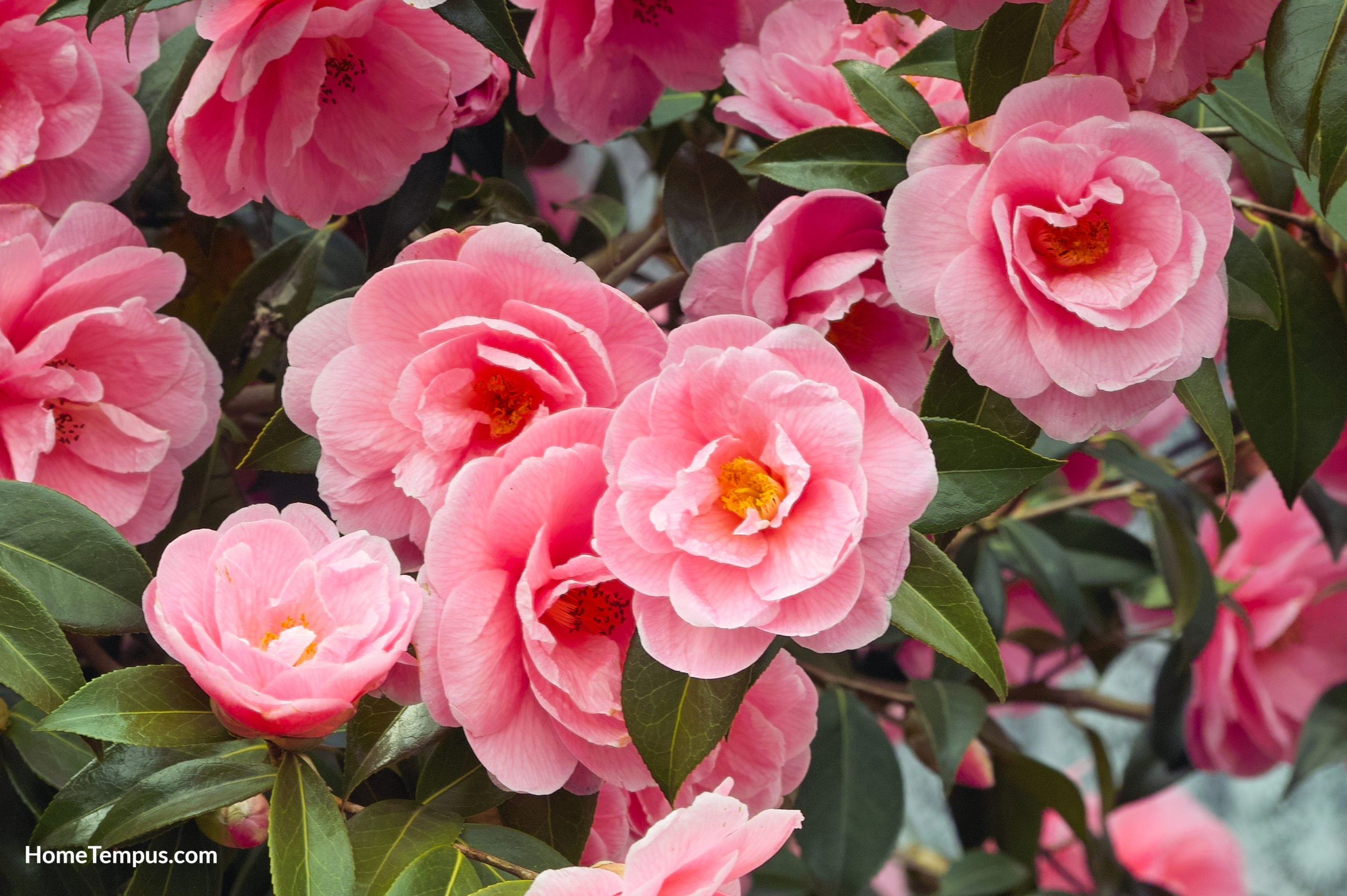
Camellia flowers are beautiful, shapely, glossy, and a favorite in gardens in China, Japan, and Korea. They flower from late autumn to early spring and the colors range from white to pink to dark red.
The dense and evergreen glossy leaves make excellent hedges and they are fairly easy to care for.
Water: Once every week or two to keep the top layer of soil relatively moist
Sun: Morning sun and afternoon shade or dappled shade
Soil pH: 5.8 – 6.5
6. Campion (Lychnis coronaria)
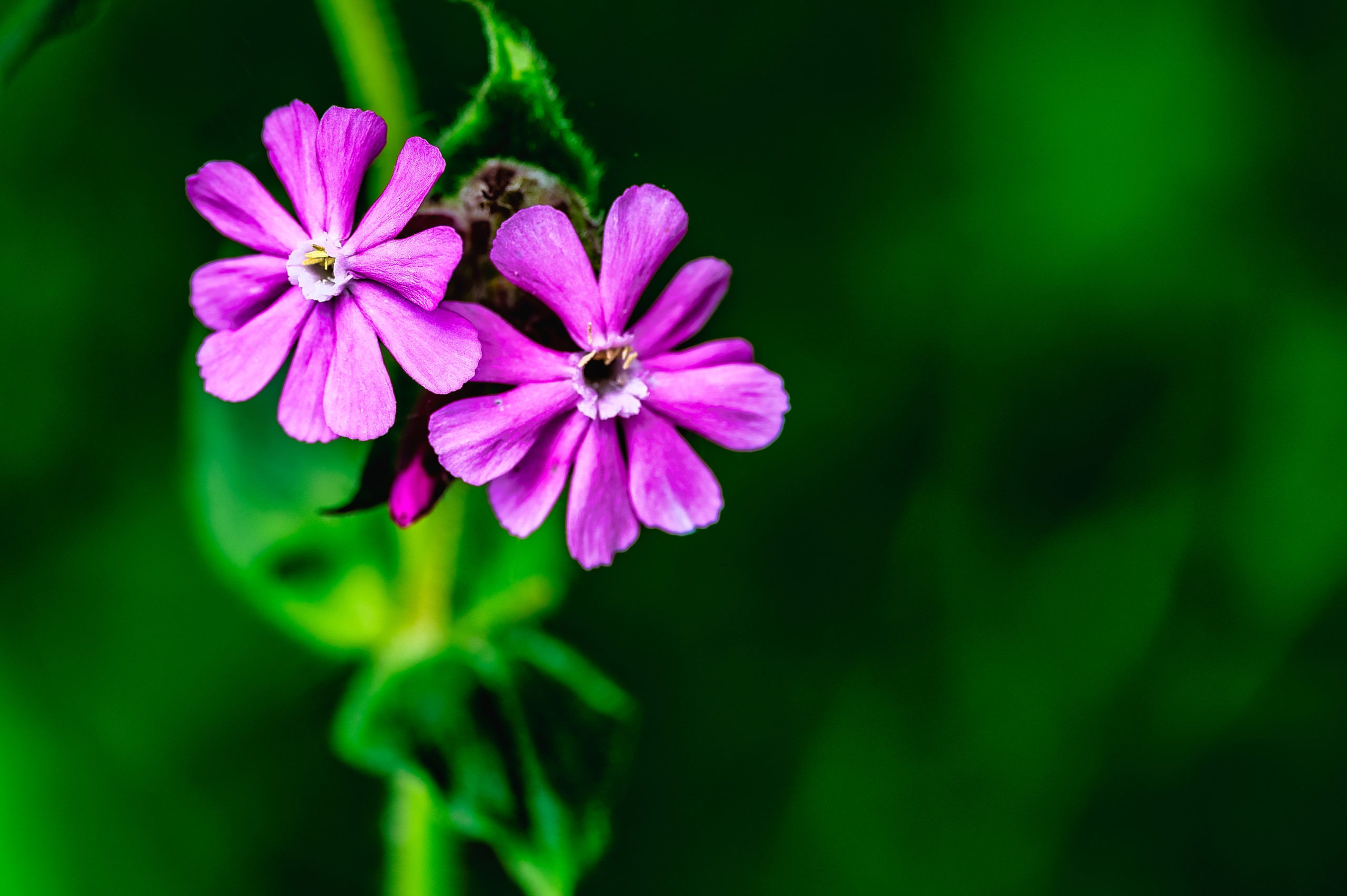
The campion flower, also known as the rose campion, is a pretty purple flower that works in a cottage garden. They like rocky and scrubby hillsides and the felt-like leaves used to be used as wicks for candles.
They are easy to look after and grow very well even if they don’t flower much during the first year.
Water: Drought-tolerant but water slowly in an extended drought for moisture to reach the roots
Sun: Full sun
Soil pH: Neutral, alkaline, or acidic
7. Canadian Violet (Viola canadensis)
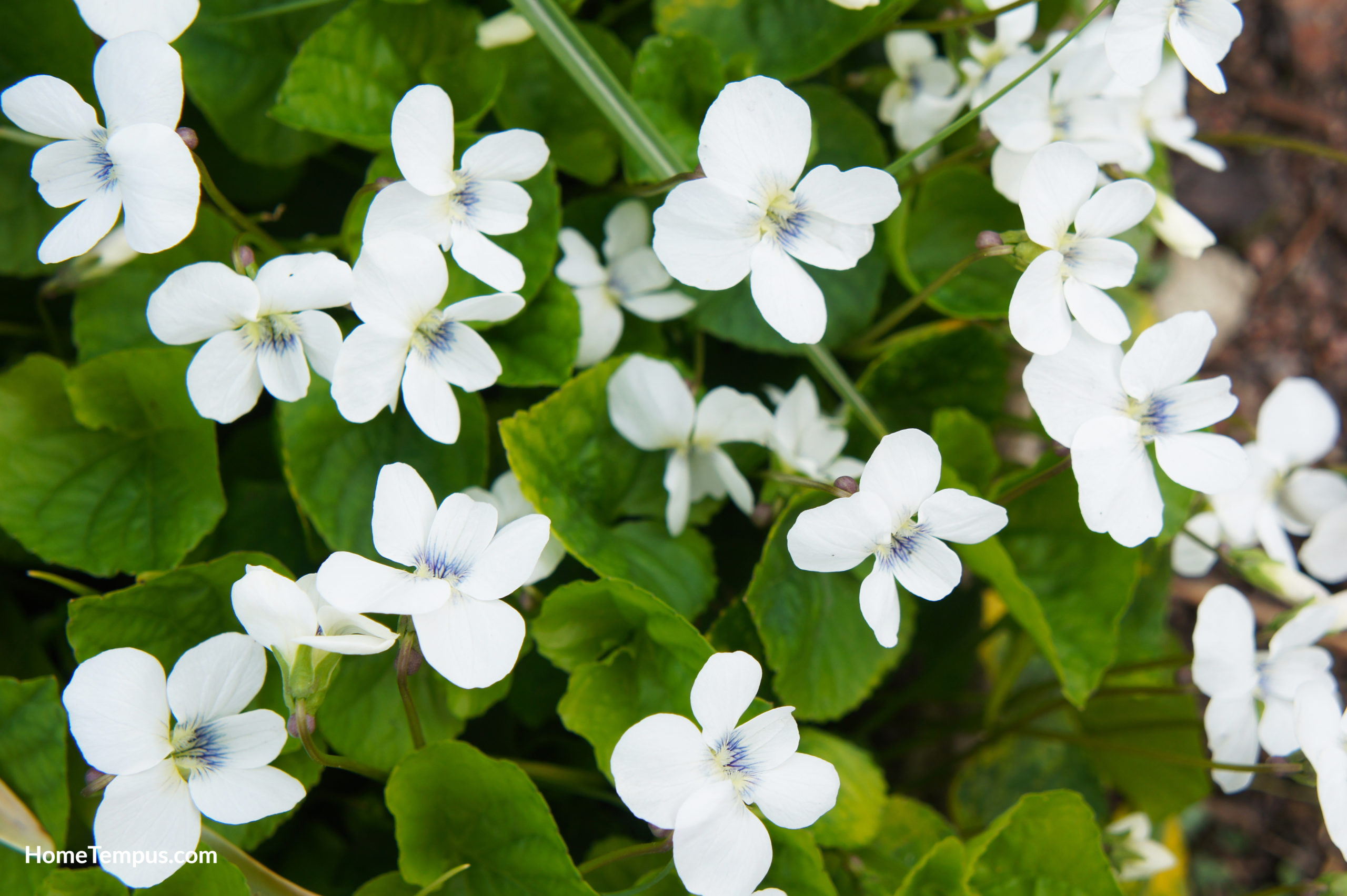
The Canadian violet is a clumping flower that produces white blooms and it grows very easily. They are exceptionally beautiful and the leaves of the plant are heart-shaped.
They do well in shady gardens and look best in a natural or wildflower-focused landscape design.
Water: Half cup of water every 10 days if potted, prefers moist soil
Sun: Partial shade
Soil pH: 6 – 6.5
8. Canadian Goldenrod (Solidago canadensis)
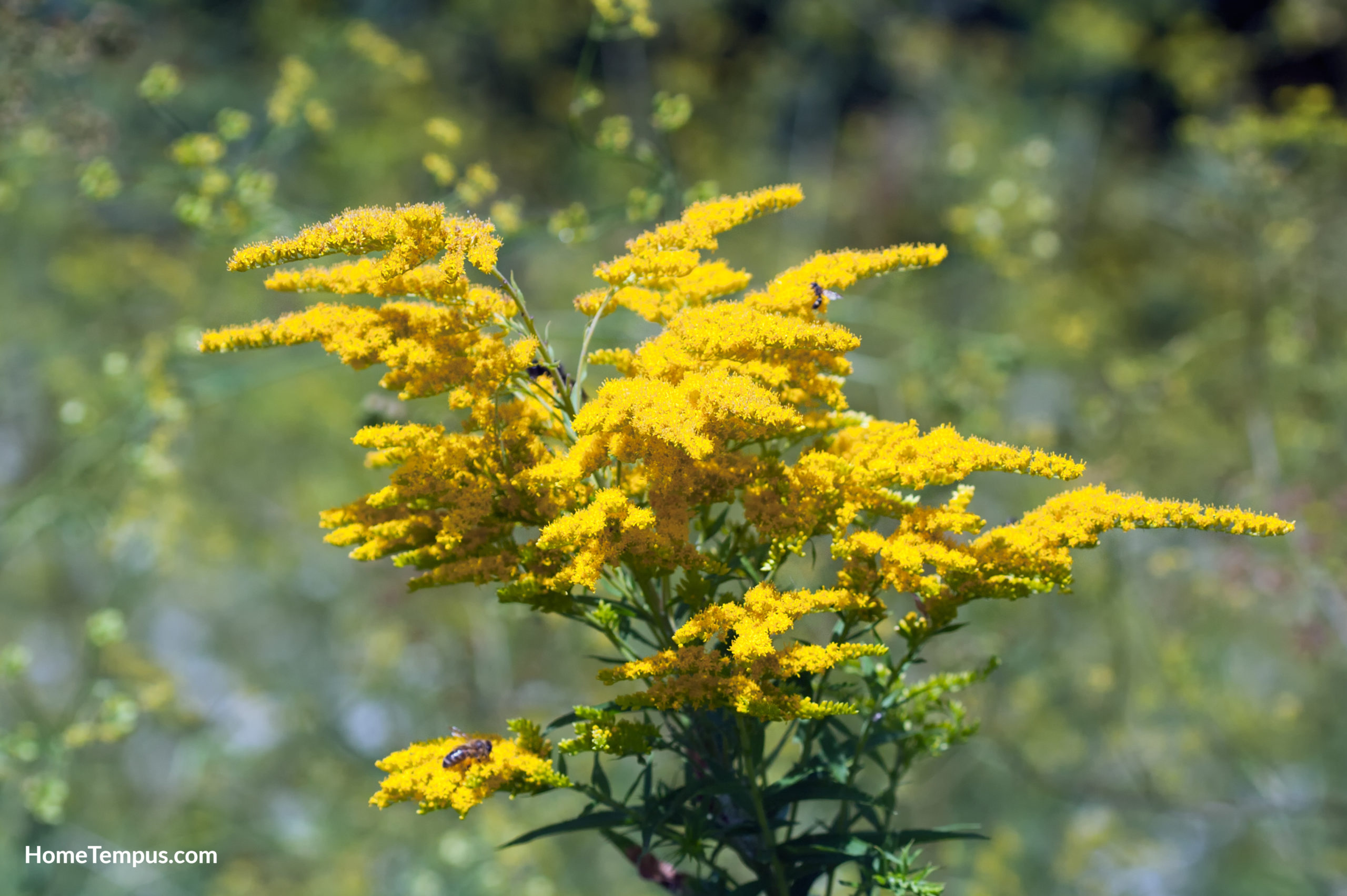
This herbaceous and perennial plant is native to north-central and northeastern North America. It grows upright and has an abundance of small, yellow flowers that look delightful.
Horses and cattle can eat the goldenrod as feed and it will attract bees and butterflies to the garden.
Water: Little to no watering, drought-tolerant
Sun: Sun or partial shade
Soil pH: 5.5 – 7.5
9. Canary Island Daisy (Asteriscus sericeus)
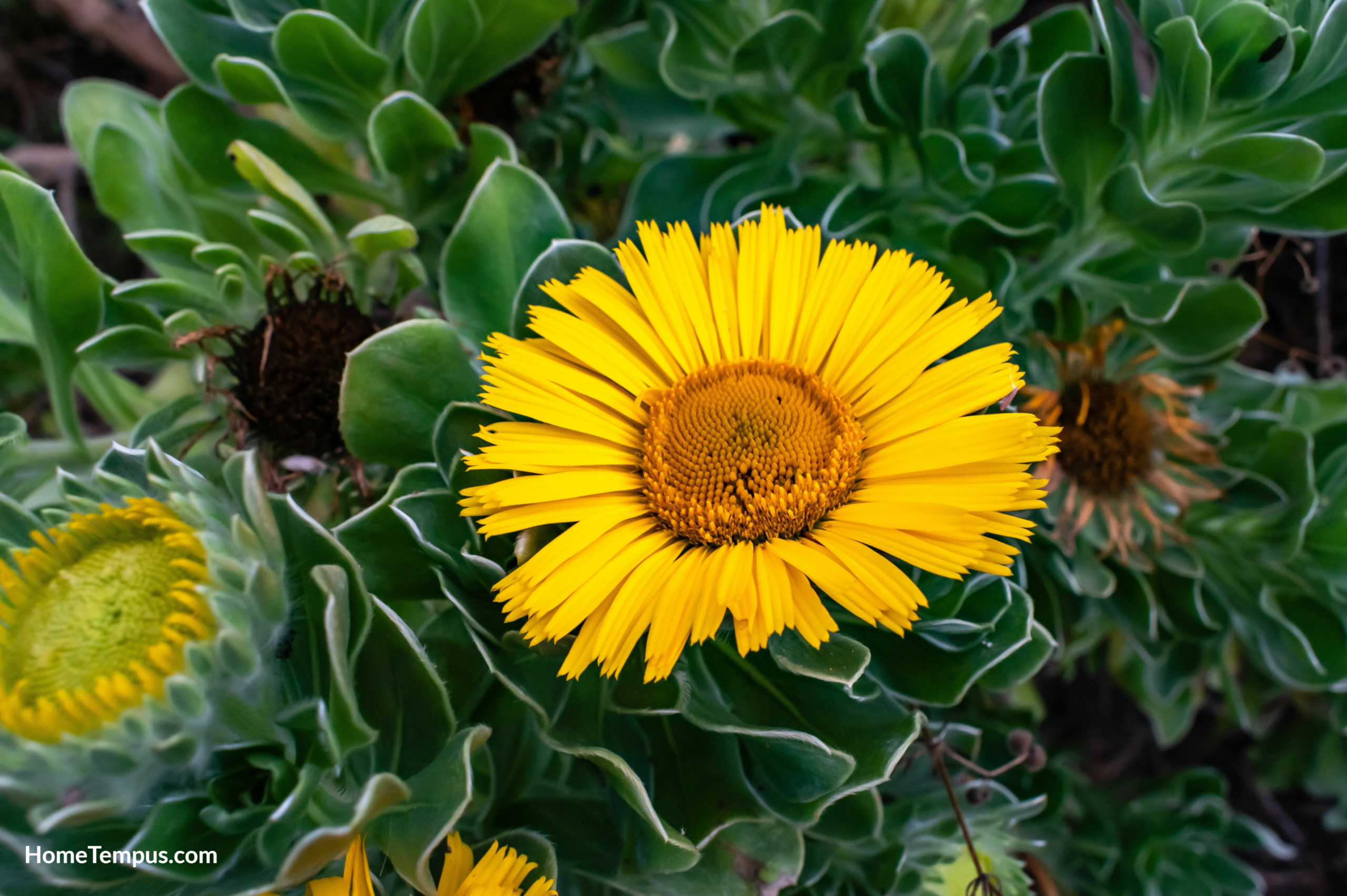
This flower is native to the Canary Islands and is ideal for coastal gardens. They also grow well in pots on sunny balconies or window ledges.
Because these flowers are also resistant to pests and disease it makes them a garden favorite. They are evergreen with yellow flowers and they bloom from late winter to early summer.
Water: Moderate but always wait for the substrate to dry before watering
Sun: Partial shade
Soil pH: 7 – 8
10. Candytuft (Iberis sempervirens)
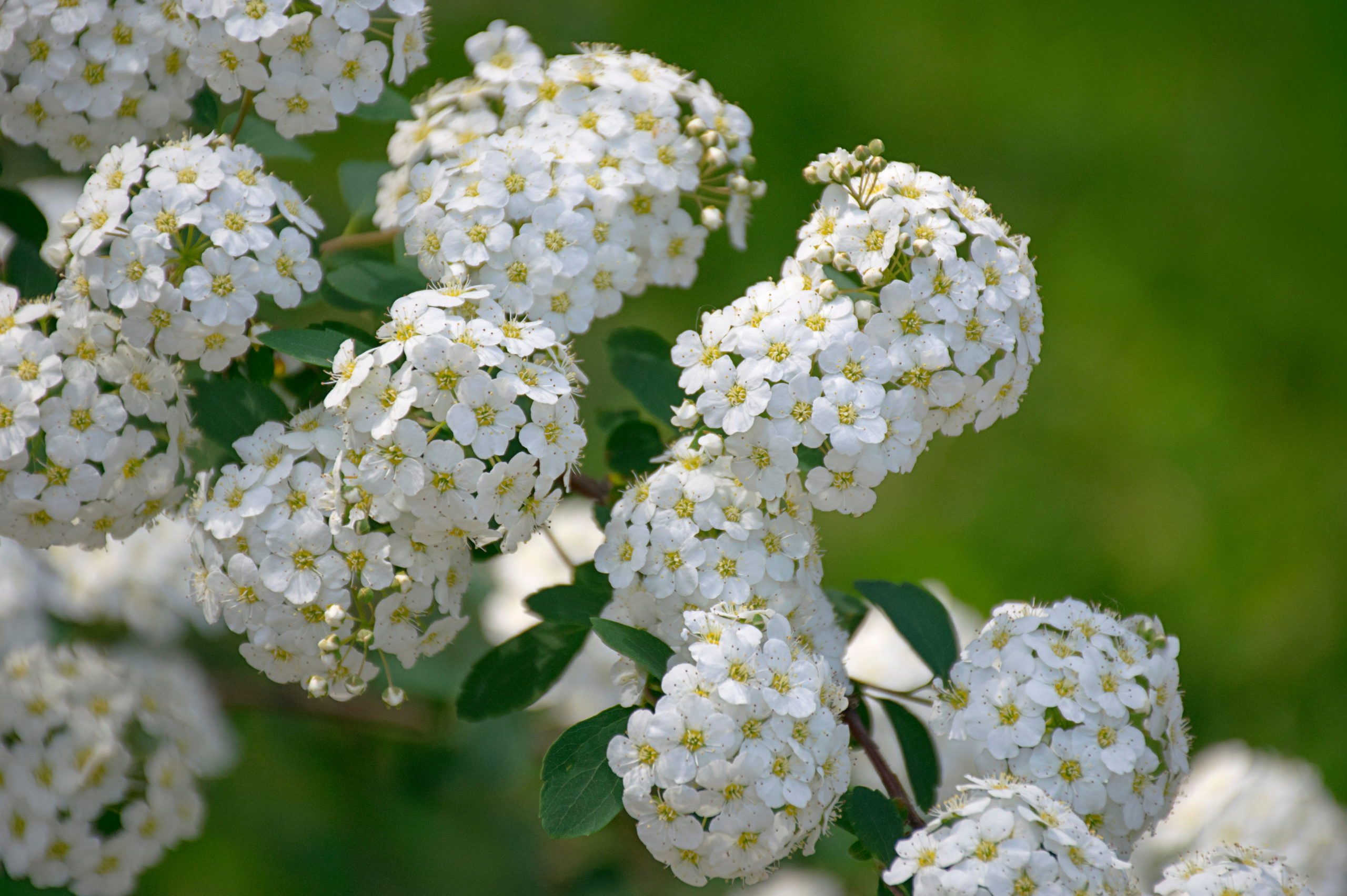
The candytuft is an adorable, evergreen plant with an abundance of white blooms. They do well when planted as borders and can also be draped in baskets or over walls.
They do need to be cut down to ground level every other year to prevent the woodiness of the stems.
Water: ¾ to 1 inch per week, drought-tolerant
Sun: Full sun
Soil pH: 7 – 8
Recommended reading:
11. Cape Daisy (Osteospermum spp.)
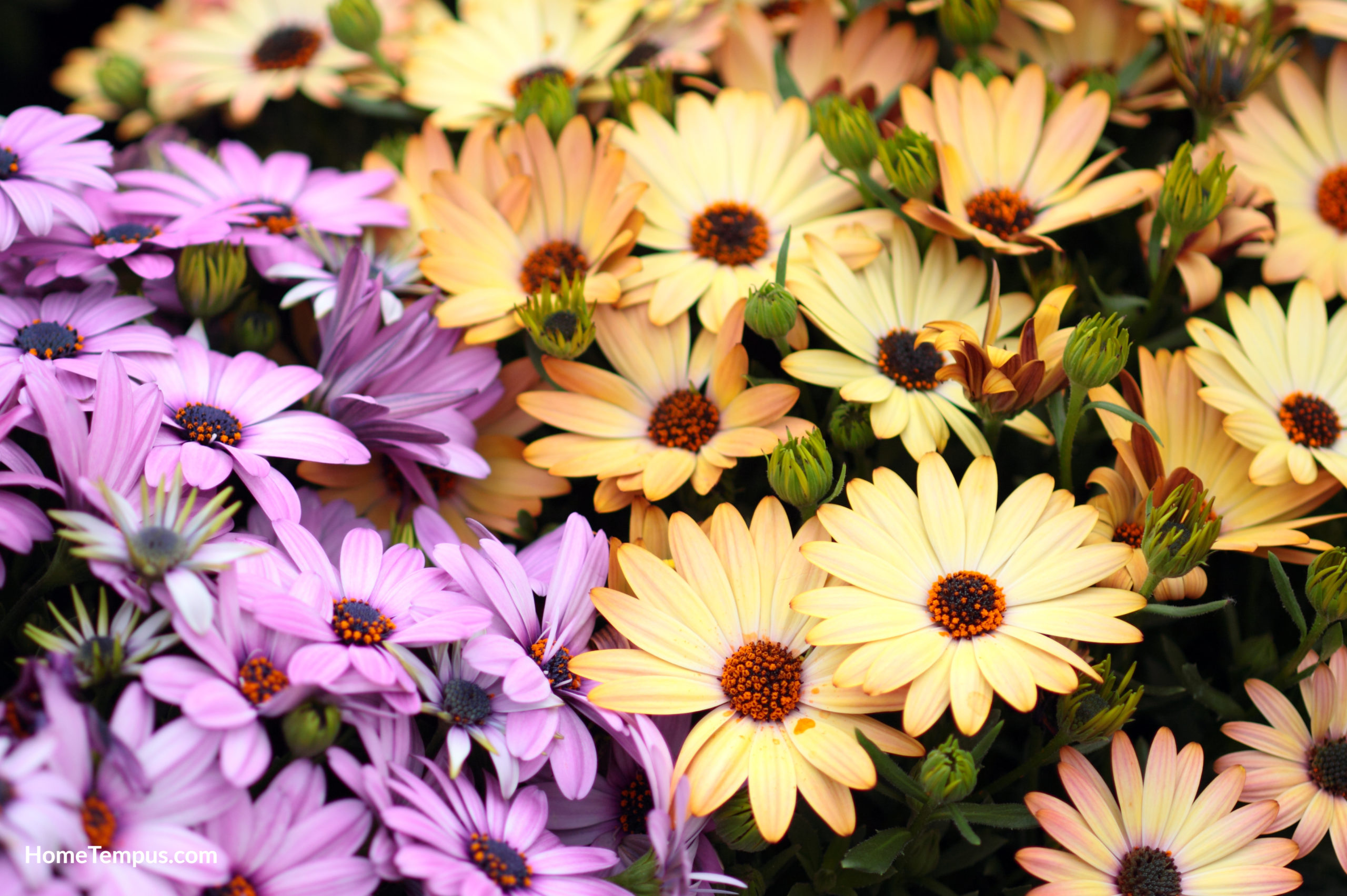
The Cape daisy is also called the African daisy and they look a lot like ordinary daisies with long petals. They grow well in either beds or containers and are relatively low maintenance.
The blooms are vividly colored and can be anything from purple, red, orange, pink, white, and yellow.
Water: 1 inch per week
Sun: Full sun
Soil pH: 6.5 – 7
12. Cardinal Flower (Lobelia cardinalis)
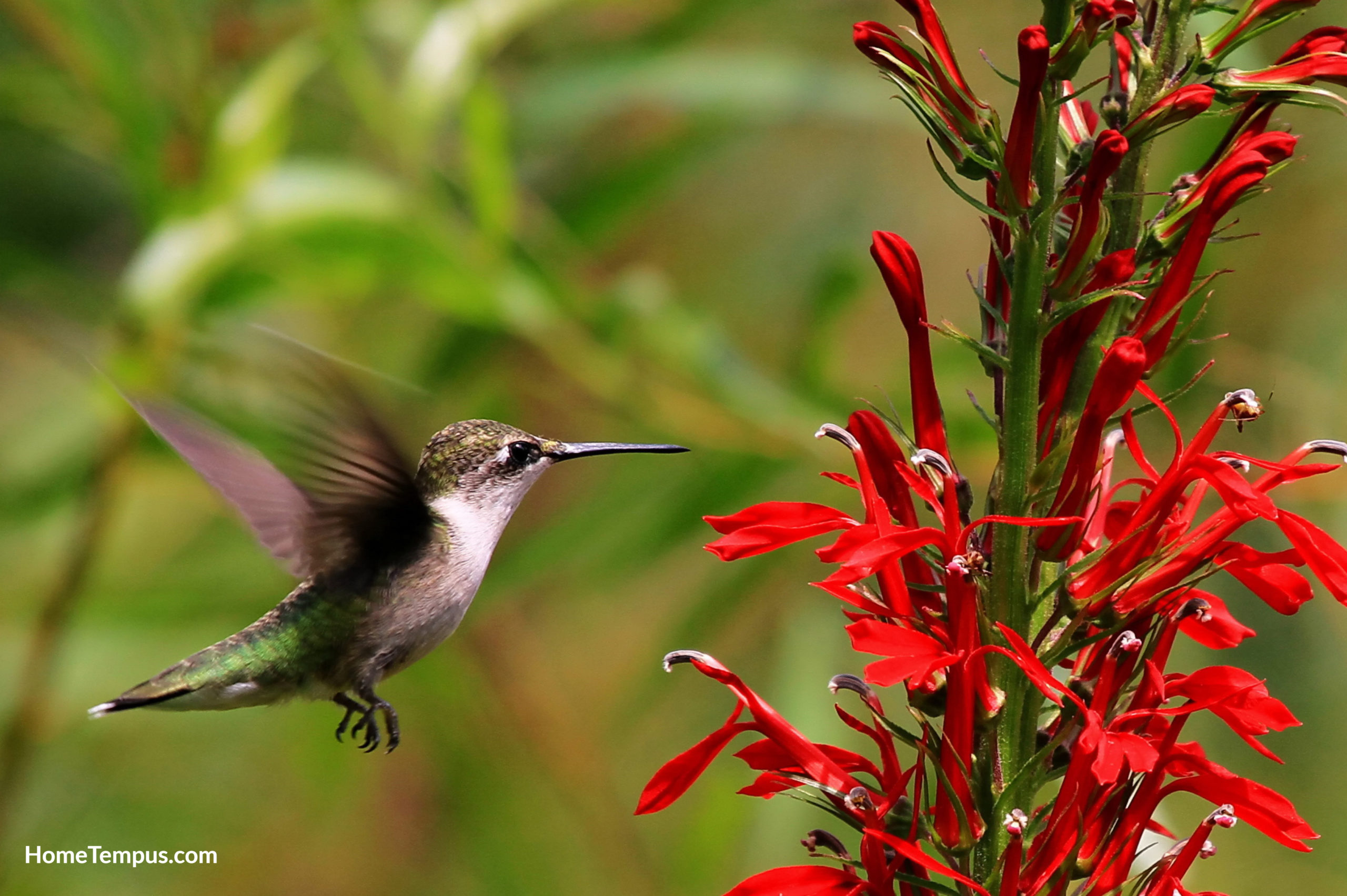
The cardinal flower is a tall plant with vivid and impressive red flowers. They are fairly common but over-picking of the wildflower variety has led to scarcity in some places.
They also depend on hummingbirds for pollination and will, therefore, draw these types of birds.
Water: Consistently damp soil, can be planted in 1 – 2 inches of standing water
Sun: Full sun to partial shade
Soil pH: 6 – 7.5
13. Carnation (Dianthus caryophyllus)
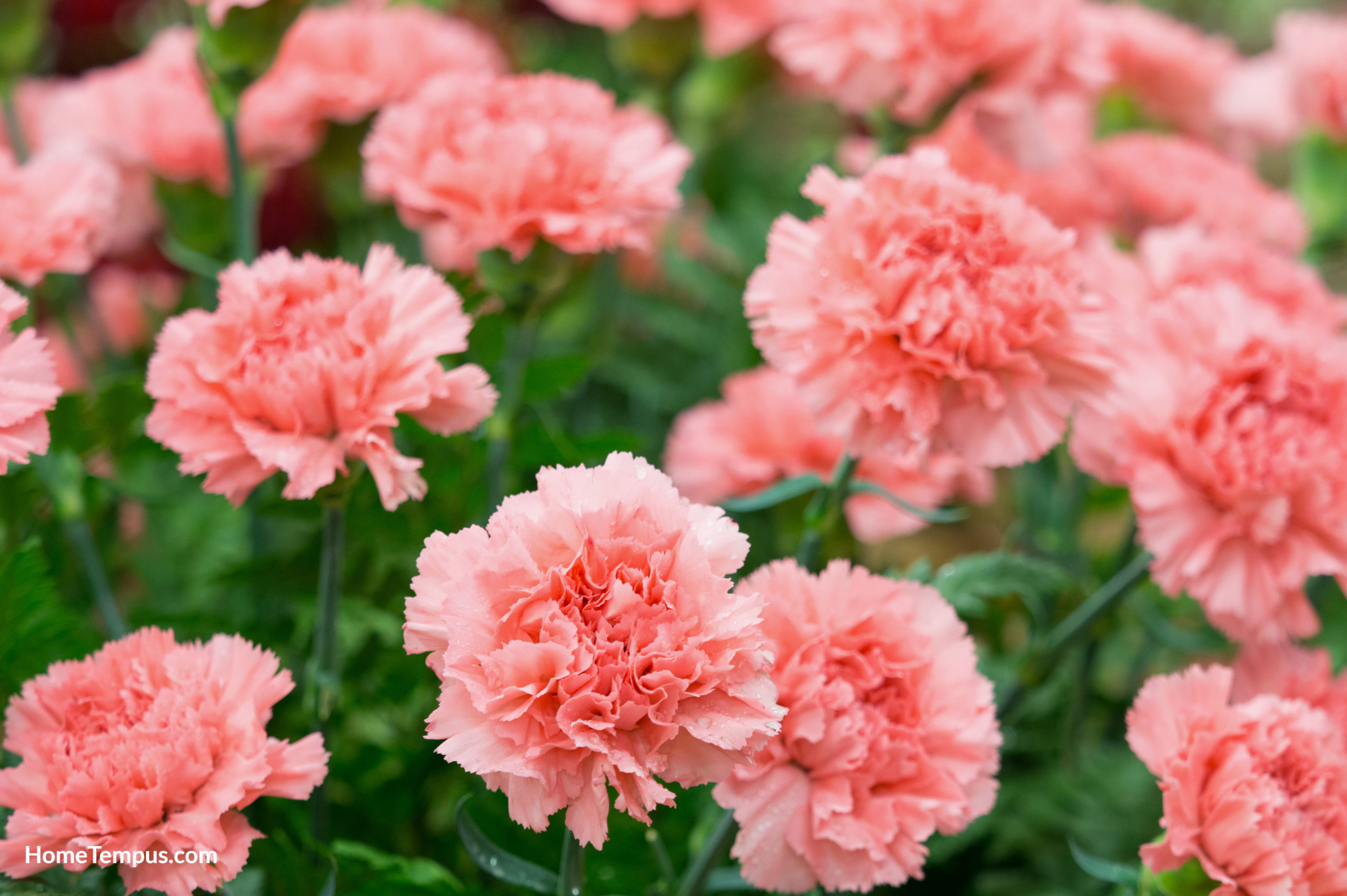
The carnation is the epitome of the flower and their family name literally means “flower of the gods”. They are very fragrant, very frilly and beautiful, and remain the most popular of all cut flowers.
The plants can be grown both indoors and outdoors and bloom from early spring.
Water: A light misting to 1 inch of water per week if top 3 inches of soil is dry
Sun: Full sun
Soil pH: 5.5 – 6.2
14. Catchfly (Silene armeria)
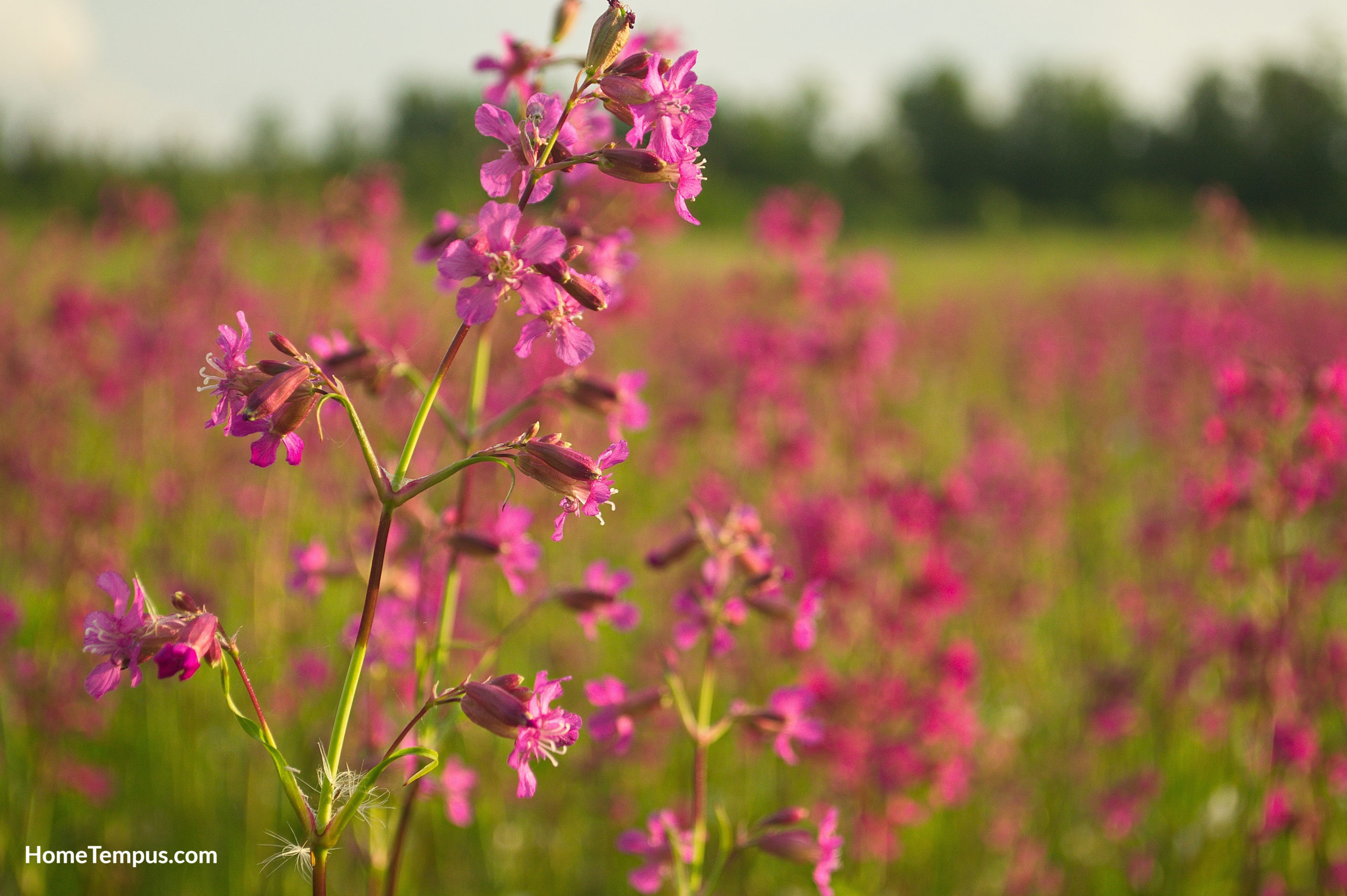
The catchfly is native to Europe and it does prefer a colder climate to sweltering heat. The plant flowers from May to September in primarily pink but also lilac and white blooms.
They flower for long, so are a favorite if you’d like a splash of color for an extended period of time. They also self-seed very well and you will need to deadhead the plant if you don’t want it to spread.
Water: Even moisture year-round
Sun: Full to partial sun
Soil pH: 6 – 8
15. Catnip (Nepeta cataria)
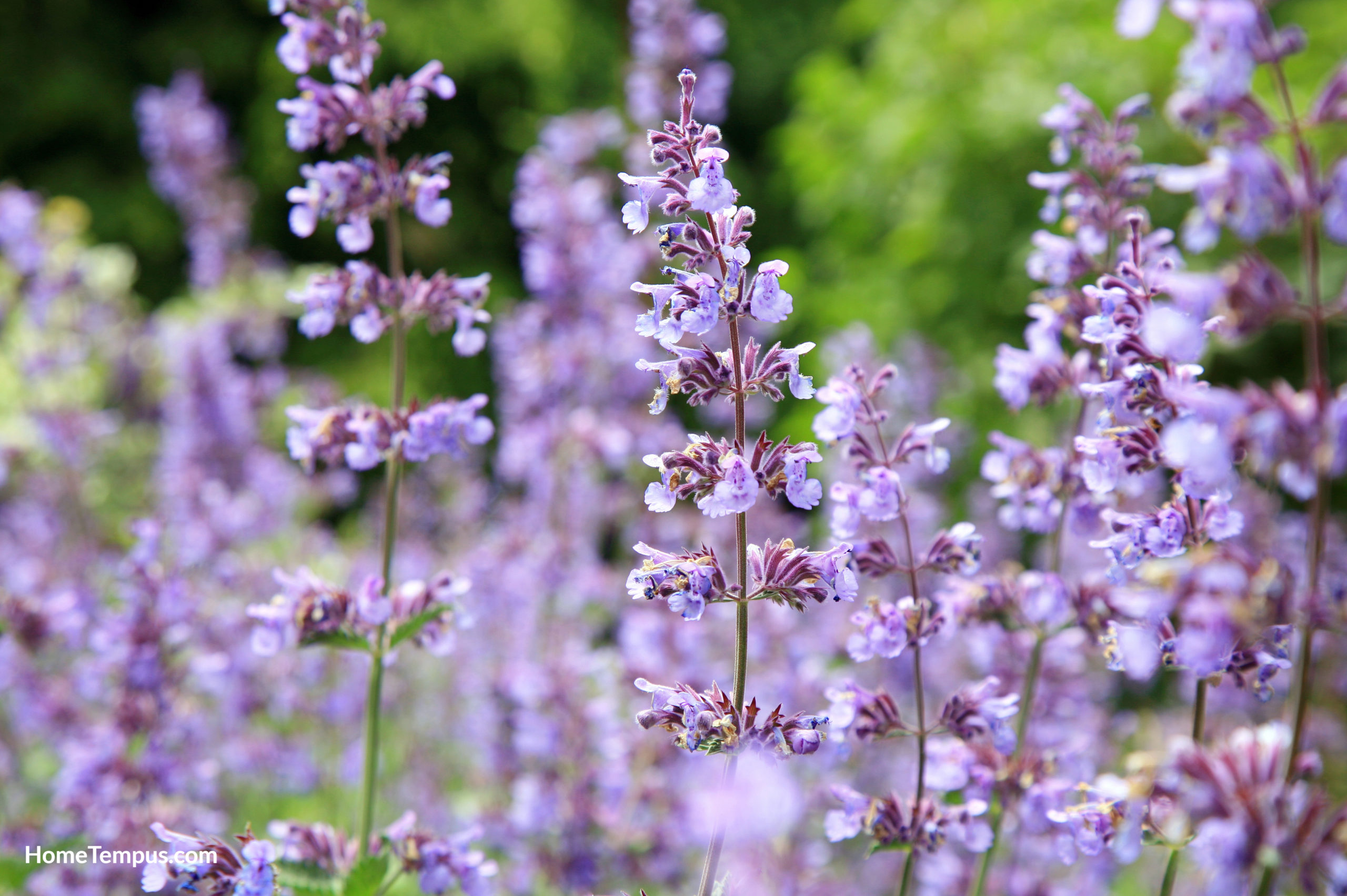
Catnip is a perennial that thrives in North America and grows very easily. It can spread quickly and will reach its mature height in a single season. Cats may enjoy catnip but the blooms are appealing to humans as well with small white to purple blooms.
Water: Drought-tolerant, water if the foliage is wilting
Sun: Full sun
Soil pH: 6.1 – 7.8
16. Chamomile (Chamaemelum nobile)
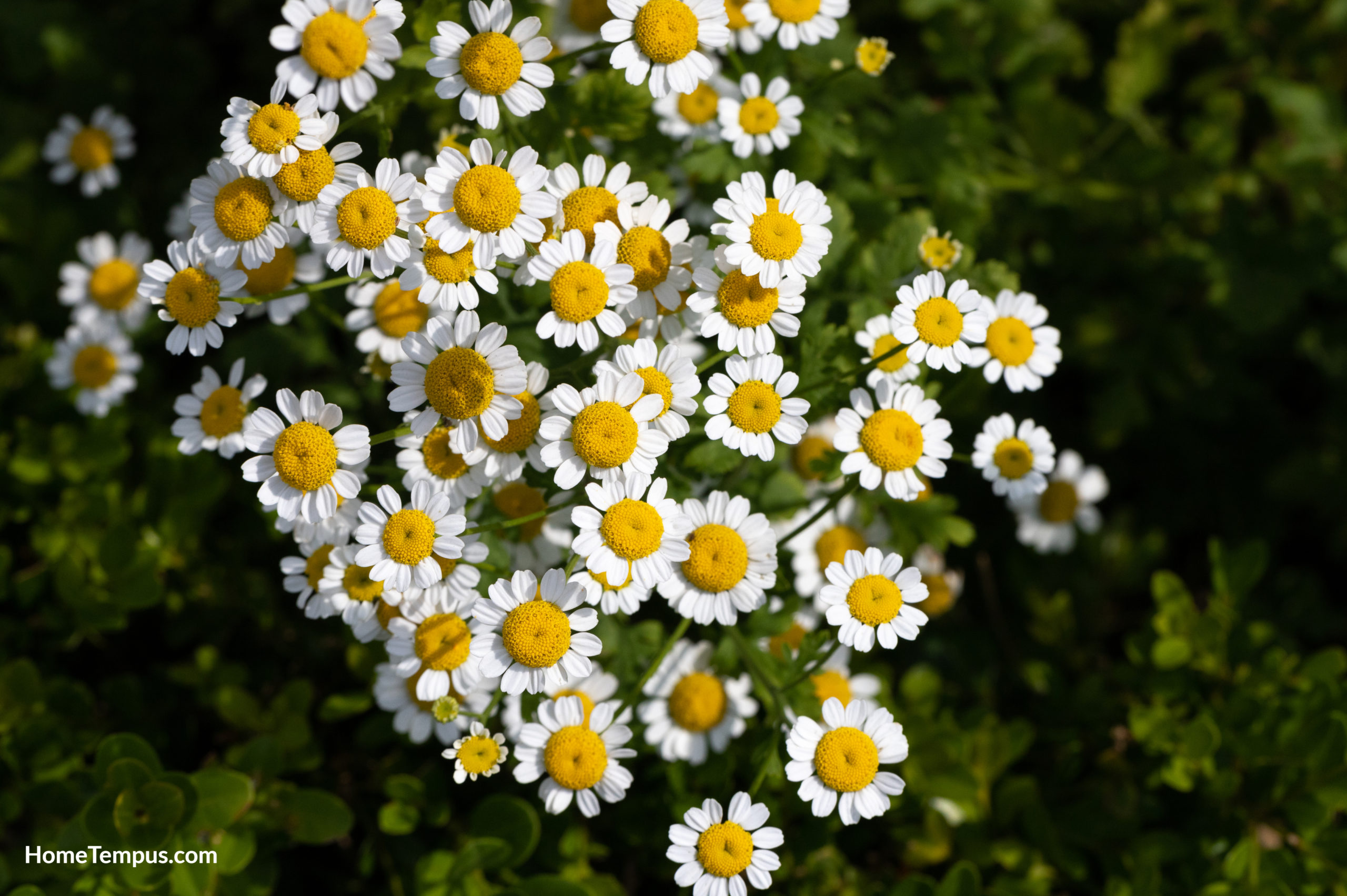
Chamomile is not just perfect in tea form, the little white flowers with yellow centers make attractive garden additions. It has terrific medicinal qualities and grows quickly and easily.
You can harvest the flowers and use them fresh or dried in tea for skincare and digestive health.
Water: 1 inch per week, drought-tolerant when mature
Sun: Full sun
Soil pH: 5.6 – 7.5
17. Cheddar Pink (Dianthus gratianopolitanus)
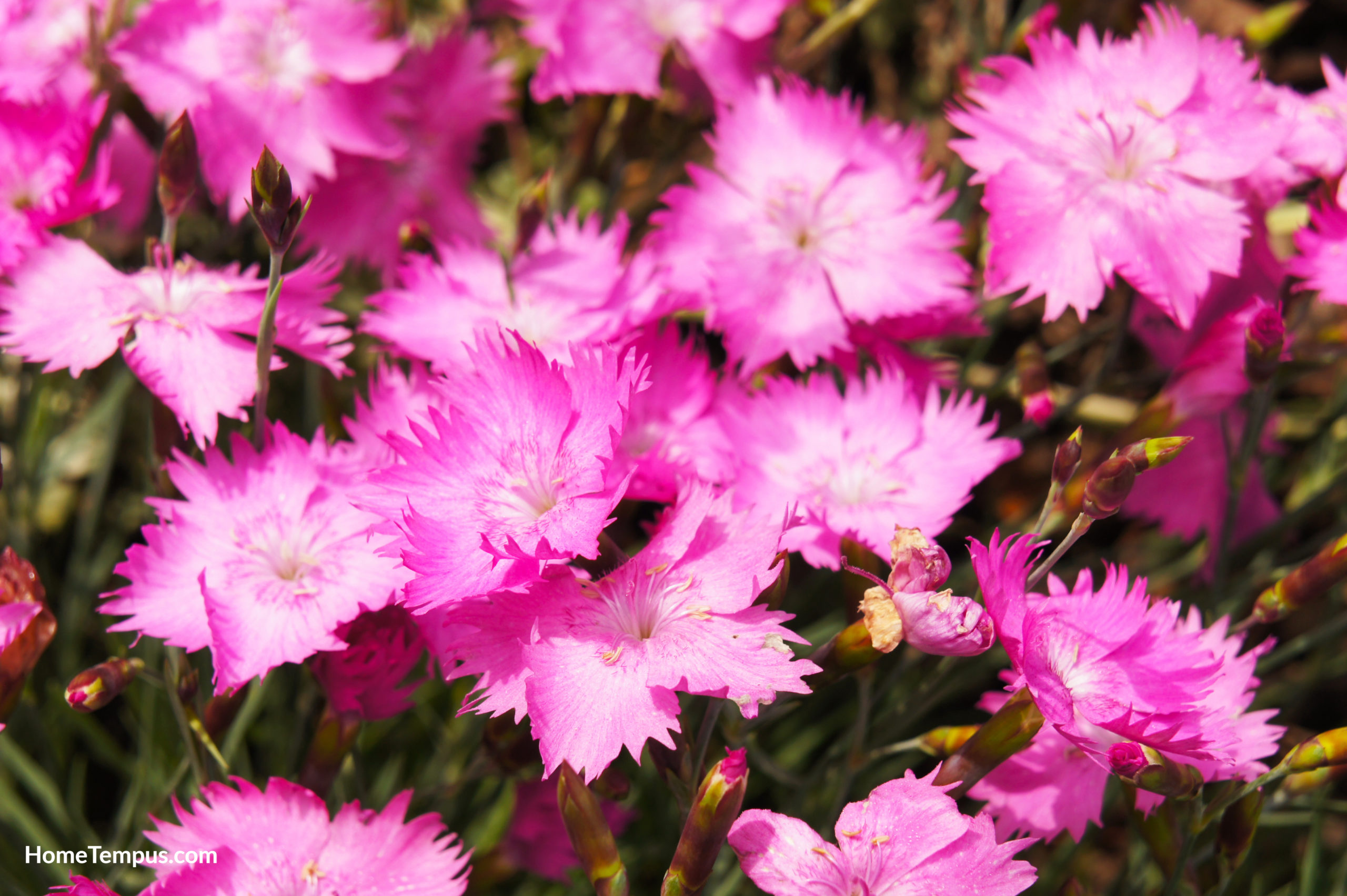
This charming evergreen plant boasts beautiful and striking pink flowers that are less than an inch in diameter.
The fringed petals bloom enthusiastically in the spring and they attract bees and butterflies. This plant is hardy and sturdy and thus a garden favorite.
Water: Average, regular watering
Sun: Full sun
Soil pH: Neutral and alkaline
18. Chinese Astilbe (Astilbe chinensis)
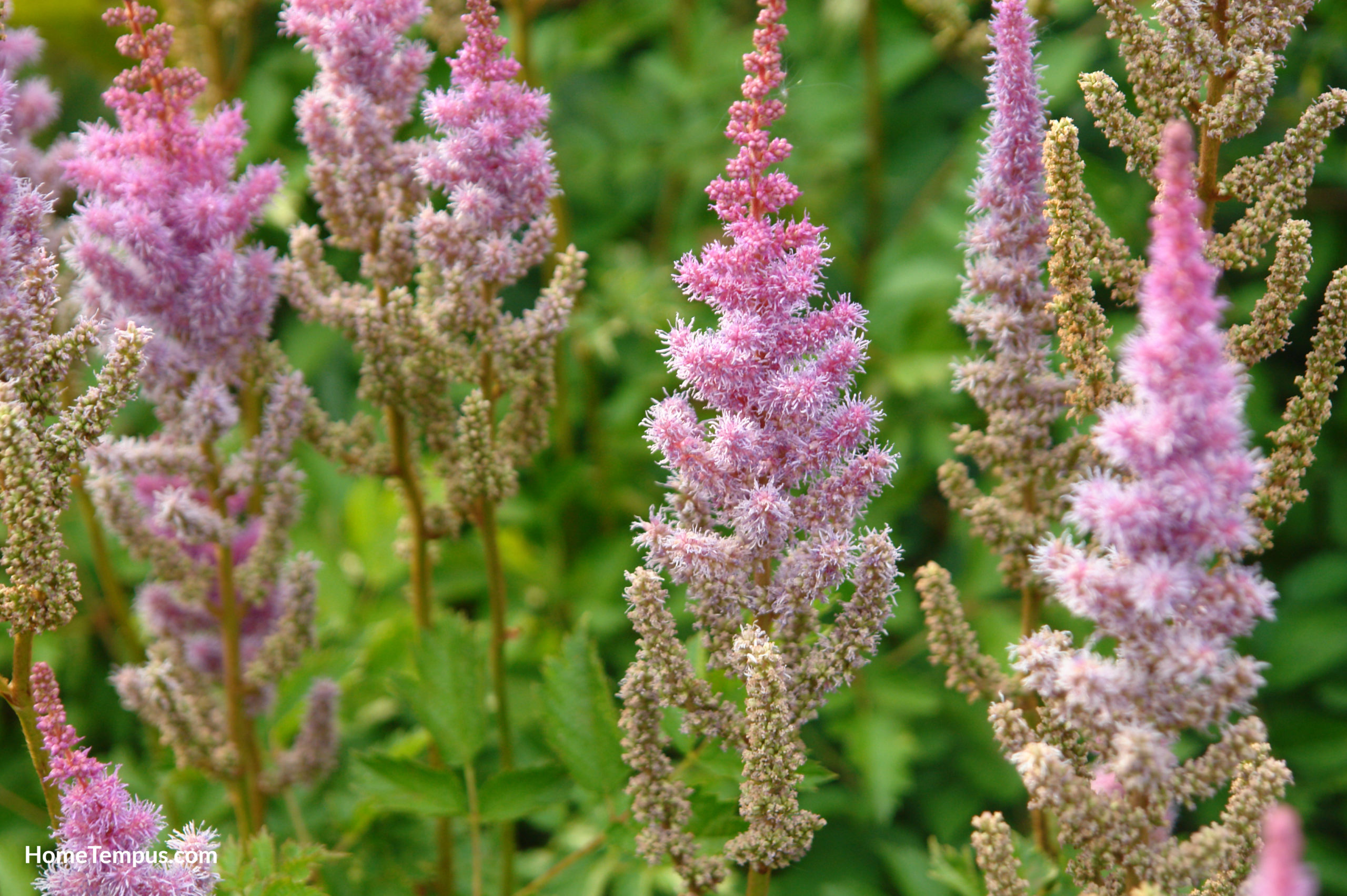
The Chinese astilbe is a tall and impressive plant with dense pink plumes that are very fragrant. They are also called “visions” and make an attractive addition to a garden, attracting bees.
The flowers bloom in midsummer, creating a beautiful splash of color.
Water: Consistent
Sun: Dappled shade to filtered sun
Soil pH: 6
19. Chrysanthemum (Chrysanthemum)
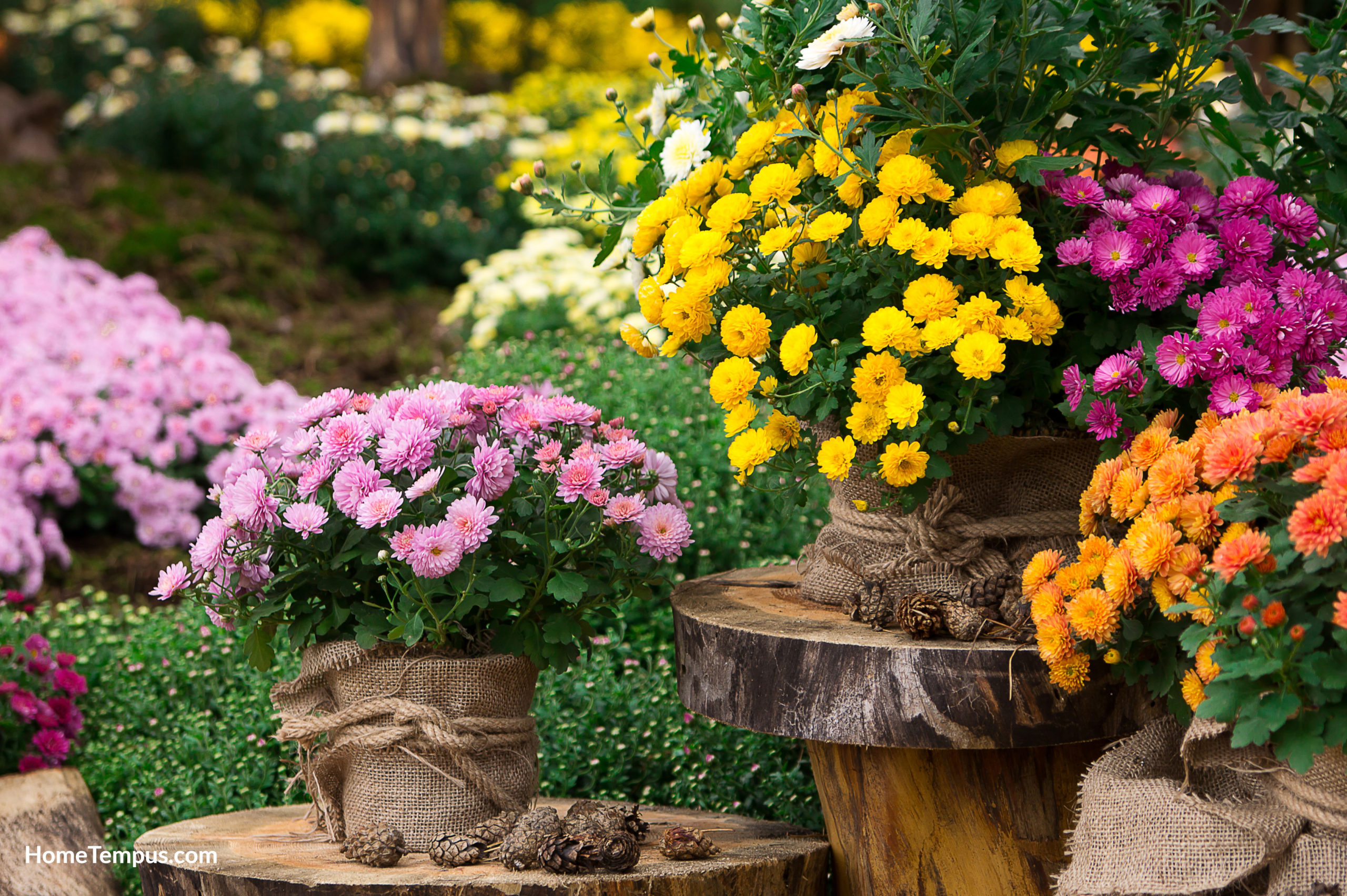
Chrysanthemums are some of the best-known flowers that start with C. They are beautiful, bright-colored, and a favorite in fall gardens. This herbaceous and hardy perennial plant comes in a wide range of shapes, colors, and sizes.
They can be anything from bright white to beautiful bronze and the blooms are very dense. There are more than 100 chrysanthemum cultivars in the United States.
Water: Even moisture, early morning watering
Sun: Full sun to light shade
Soil pH: 6.5 – 7
20. Cinquefoil (Potentilla)
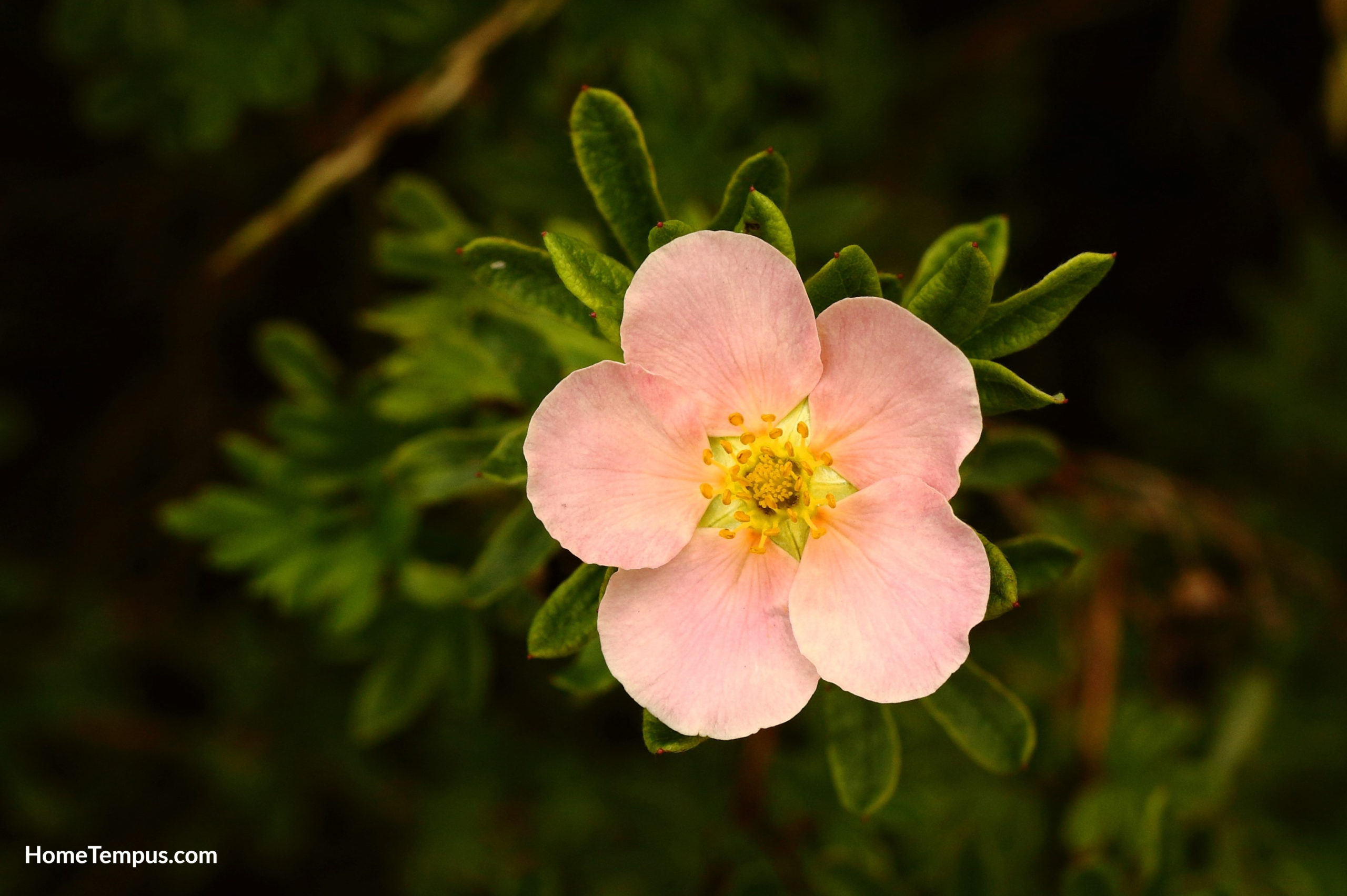
The French name of the cinquefoil means five-leaf and this ornamental flower has five beautiful yellow petals. But they also produce an accompanying fruit that is quite similar to a dry strawberry.
Because the dense bush doesn’t grow very high, it is therefore often used as cover.
Water: Weekly watering
Sun: Full sun
Soil pH: 5 – 7
21. Clematis (Clematis L.)
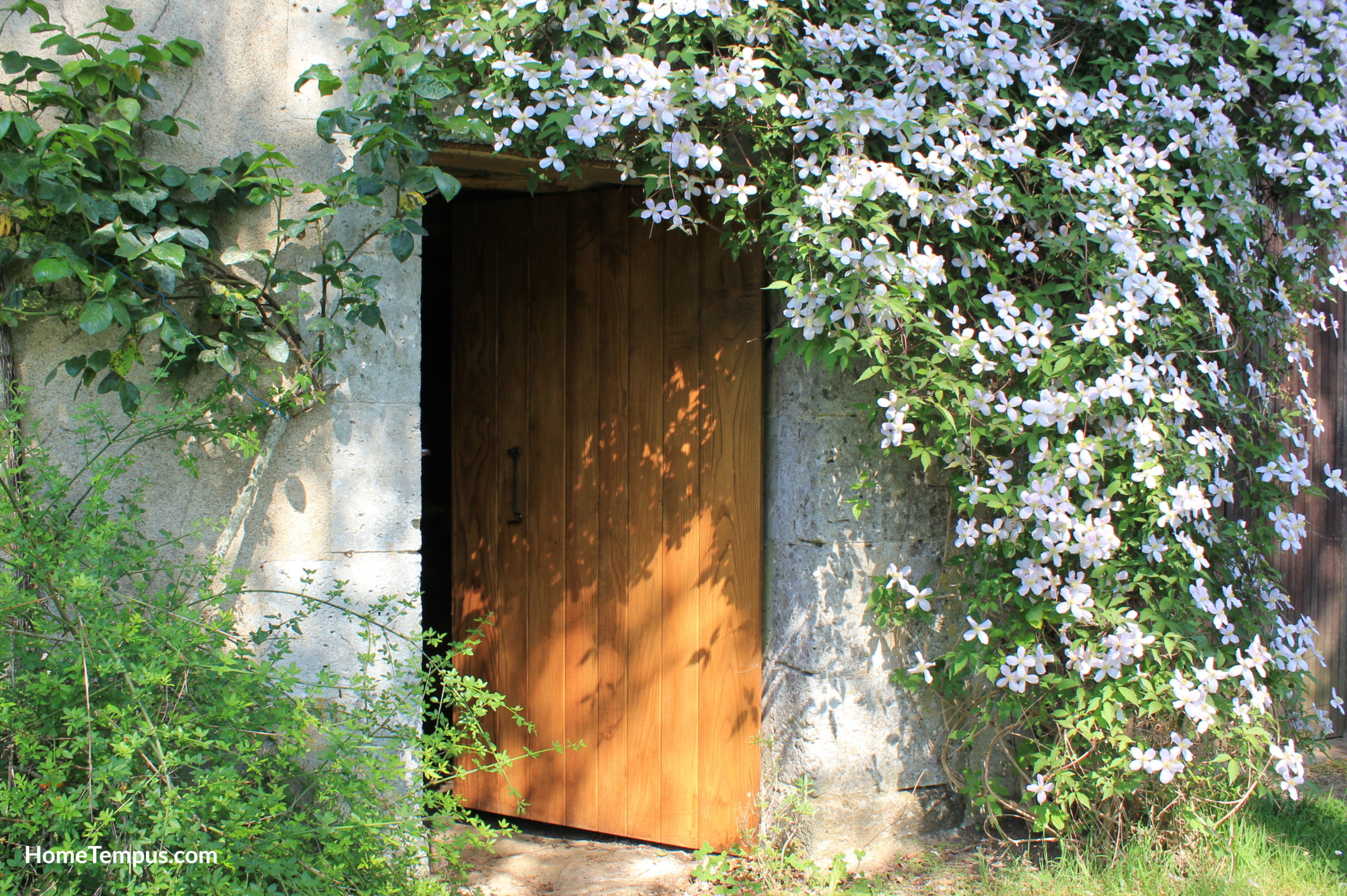
This beautiful and striking flower is known as the queen of creepers and can get 10 to 20 feet tall. The flowers are large, 5 to 6 inches across, and range from white to wine red and lavender to purple.
However, this plant is best to purchase when already mature. And you’ll need to provide it with a trellis or something to creep onto.
Water: 1 inch weekly
Sun: Full sun
Soil pH: 6.5
22. Clover (Trifolium repens)
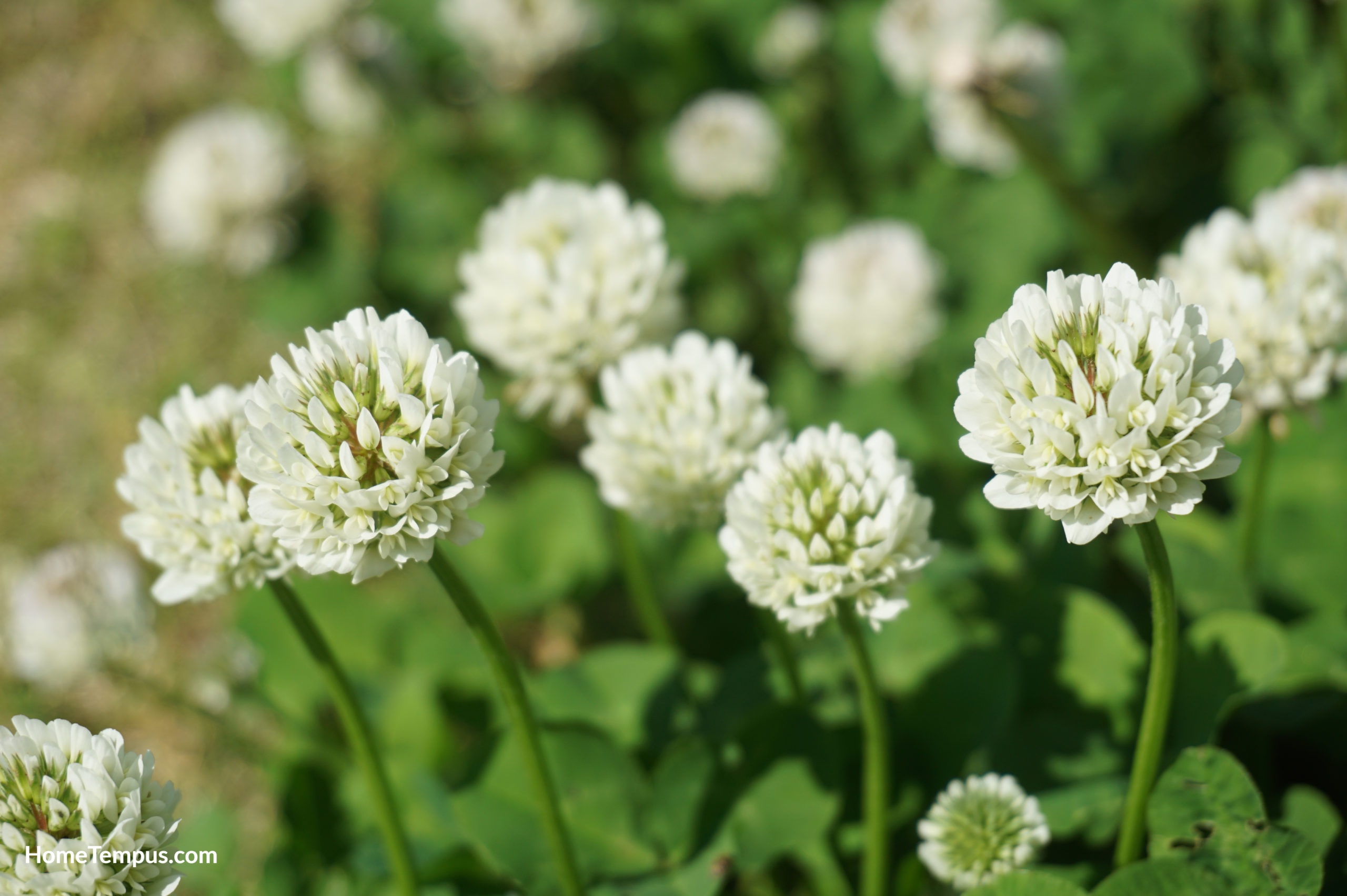
You may have heard of an elusive and magical four-leaf clover, but the white clover plant is very real. It is native to Europe and Central Asia and is a wildflower that was introduced as a forage crop.
Because it grows so well, it is often treated as a weed and the flowers are small, fluffy, and white.
Water: Frequent
Sun: Full sun
Soil pH: 5.5
23. Cockscomb (Celosia argentea)
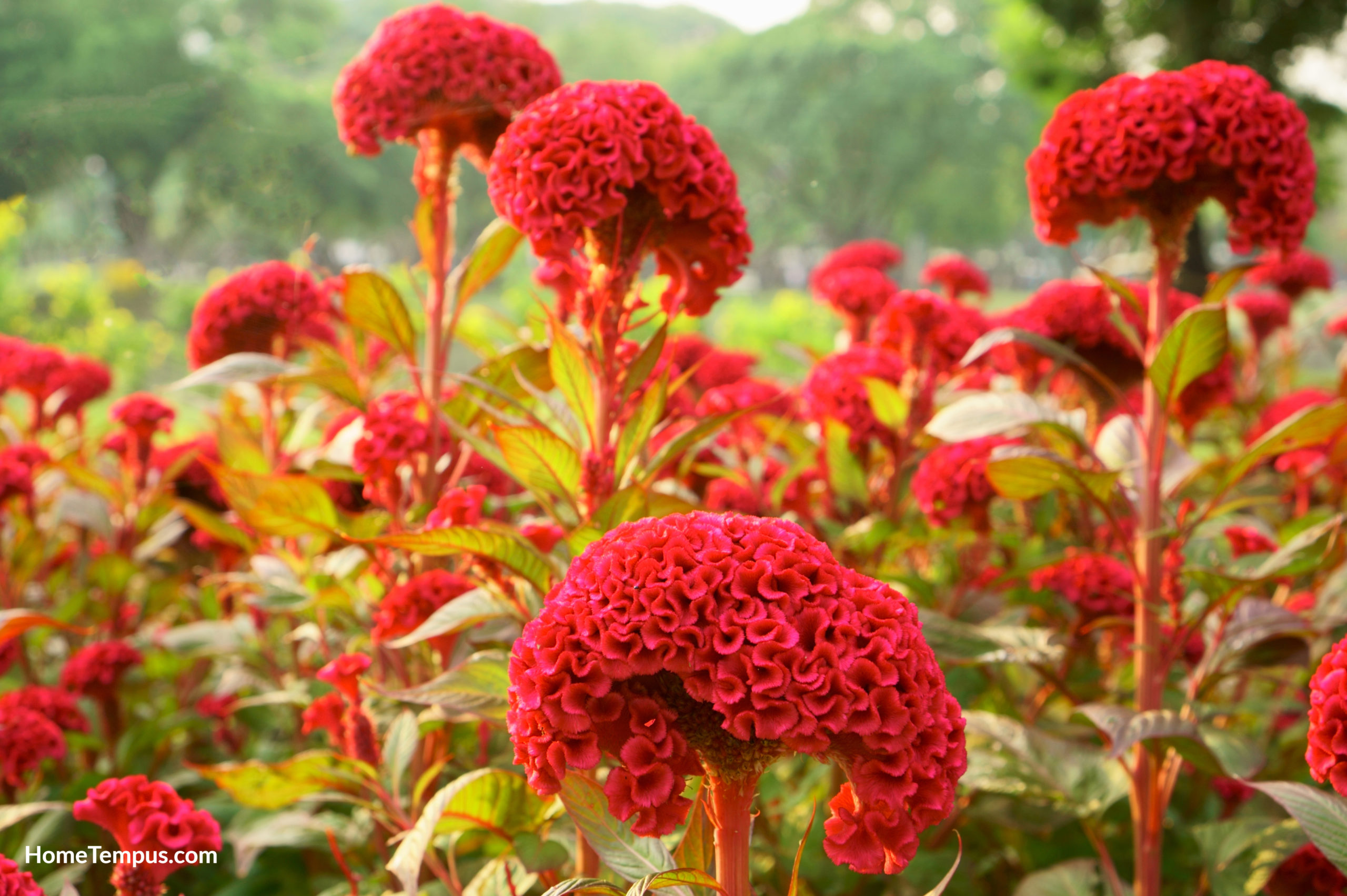
This flower gets its common name because it looks similar to the comb of a rooster. The most common flower variety is red but it can be found in yellow, orange, white, or pink as well.
As they grow low, they are suited to borders and to being planted between tall plants for a pop of color.
Water: Water when the top 2 inches of soil feels dry
Sun: Full sun to partial sun
Soil pH: Acidic and neutral
24. Columbine (Aquilegia)
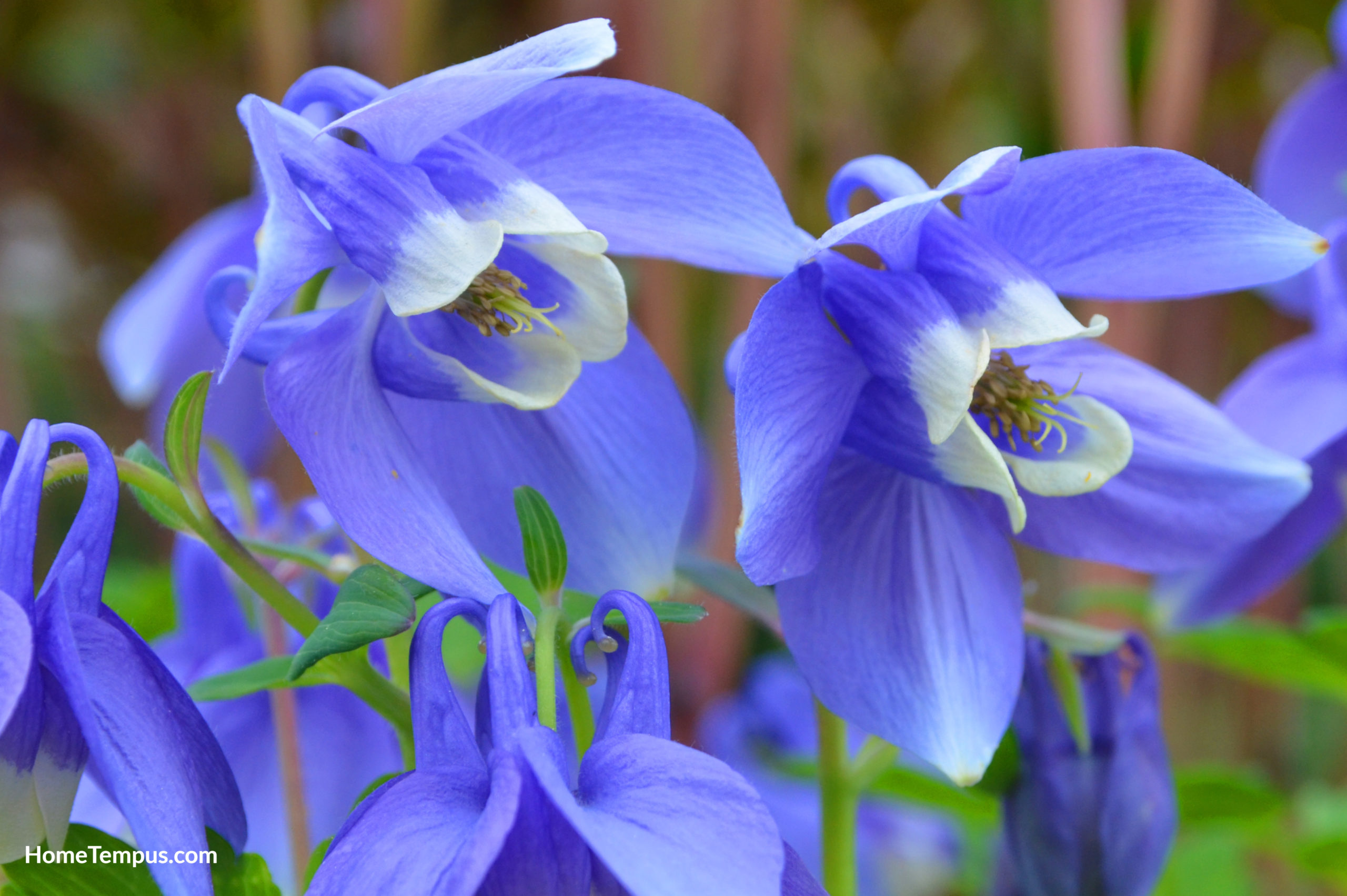
The columbine flower grows easily and prolifically blooms during the spring in a variety of colors. Because the flowers are bell-shaped and vibrant, they are beautiful in cut arrangements.
And they also attract hummingbirds to your garden.
Water: Weekly
Sun: Full sun
Soil pH: 6.1 – 6.8
25. Common Poppy (Papaver rhoeas)
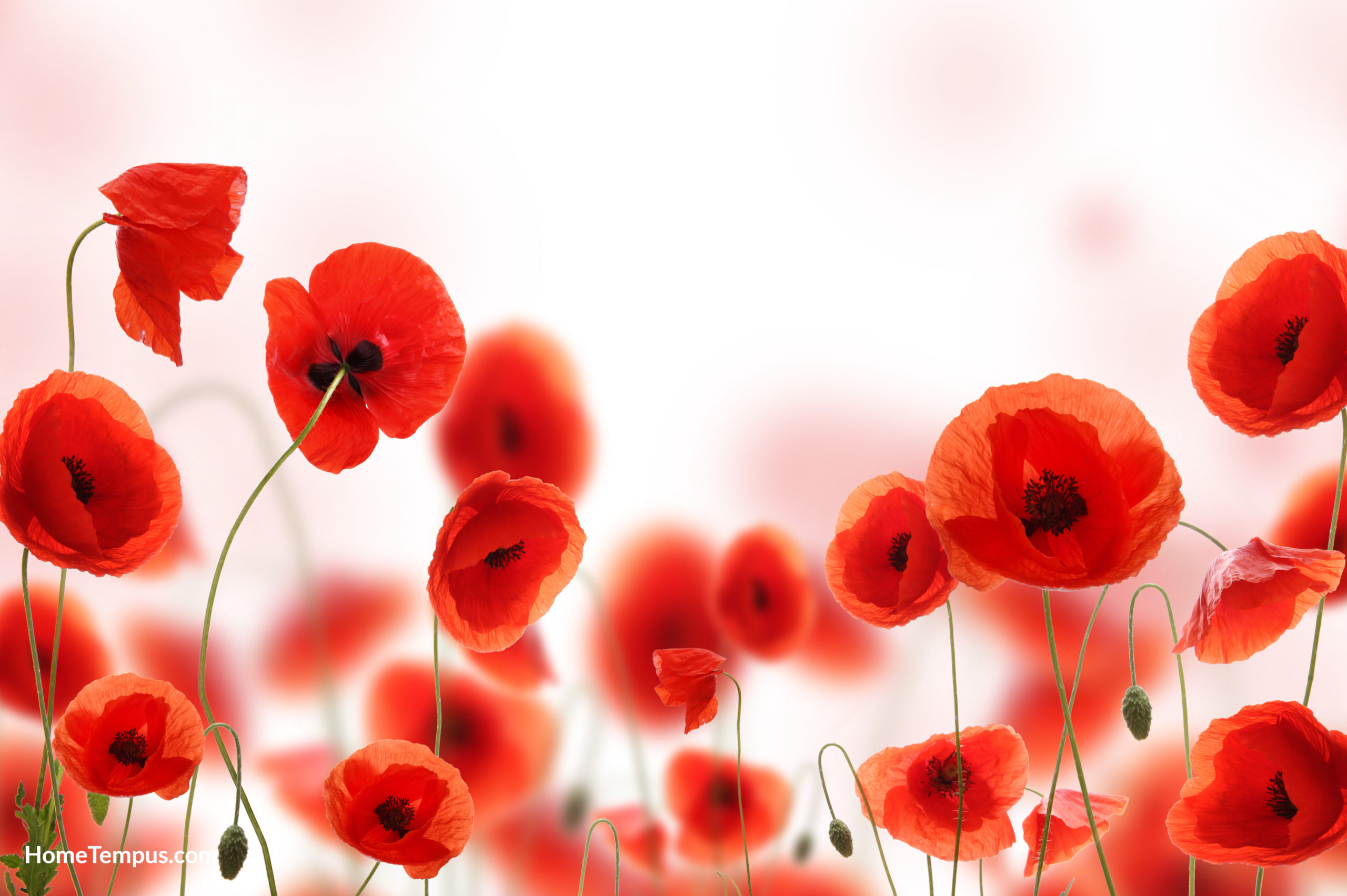
The common poppy is one of the flowers that start with C that is very well-known and very popular. The poppy is also the enduring symbol of remembrance of World War One and is linked to Armistice Day.
The most common shade of the poppy bloom is a brilliant red.
Water: Rarely, water at roots if dry
Sun: Full sun
Soil pH: 6 – 8
26. Compass Plant (Silphium laciniatum)
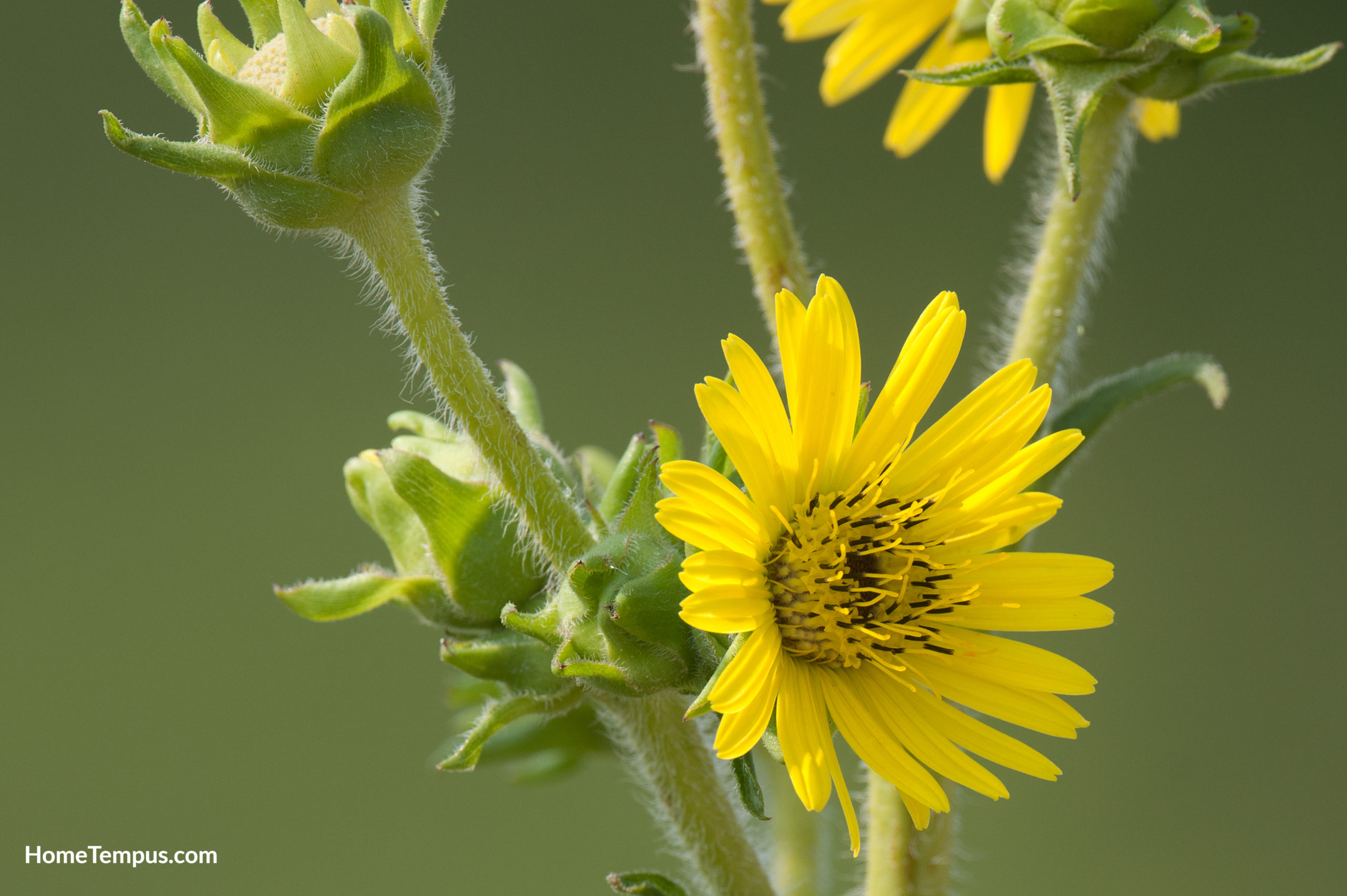
This is a very tall plant of six to twelve feet tall and it has a thick central stem and pretty yellow composite flowers. As a result, they almost look like wild sunflowers.
Additionally, the name derives from pioneers who believed the leaves pointed north-south, but that is not always true.
Water: Moist to slightly dry conditions
Sun: Full sun
Soil pH: 6.5 – 7.5
27. Coneflower (Echinacea)
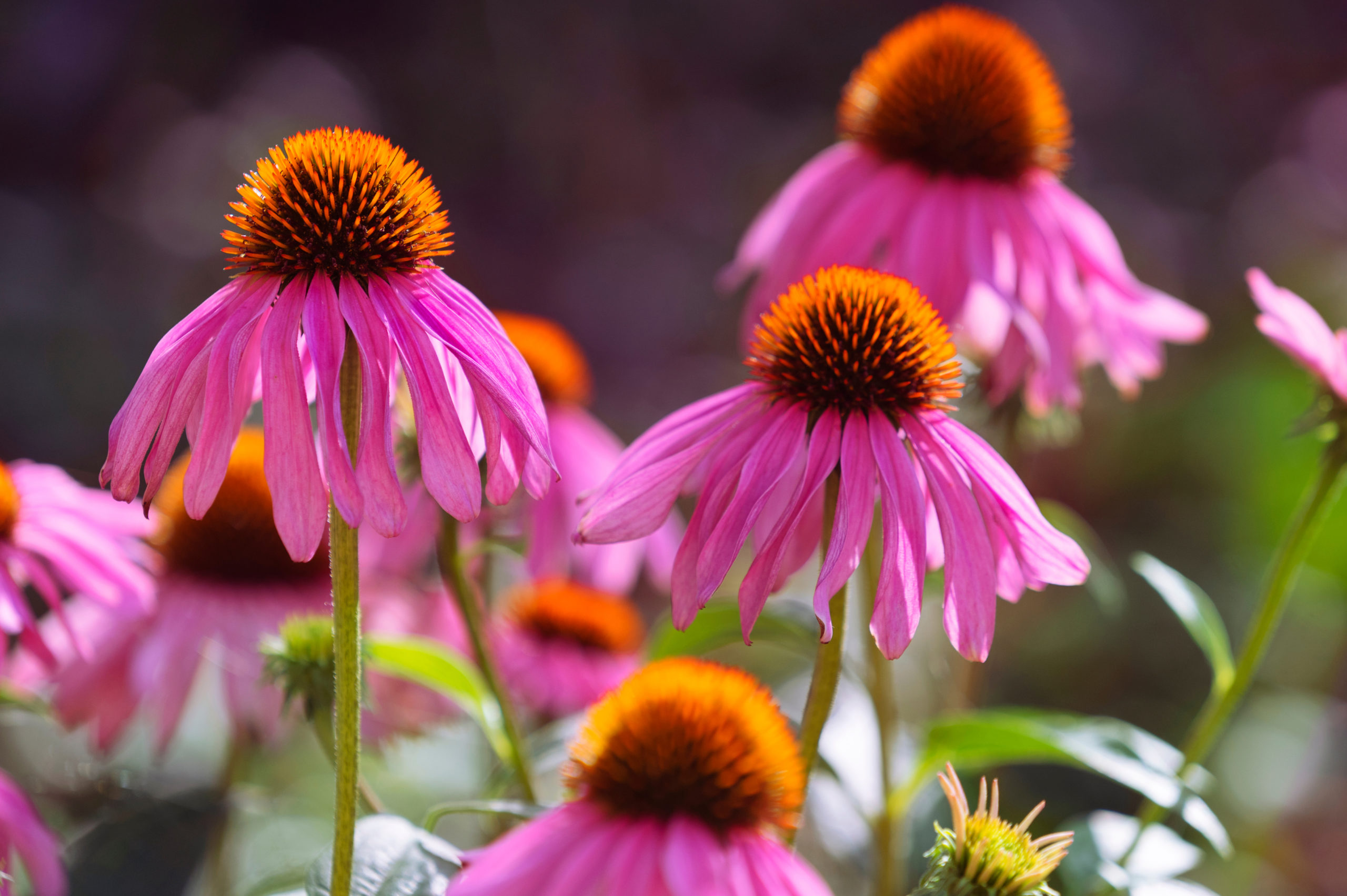
This is one of the few flowers that start with C that some people will know by its scientific name, Echinacea. The medicinal plant is widely used to treat coughs, upper respiratory infections, the common cold, and bronchitis.
And the flowers are various shades of red and they attract butterflies and songbirds.
Water: 1 inch per week but let the soil dry out before watering
Sun: Full sun to partial shade
Soil pH: 6.5 – 7.2
28. Coral Bell (Heuchera sanguinea)
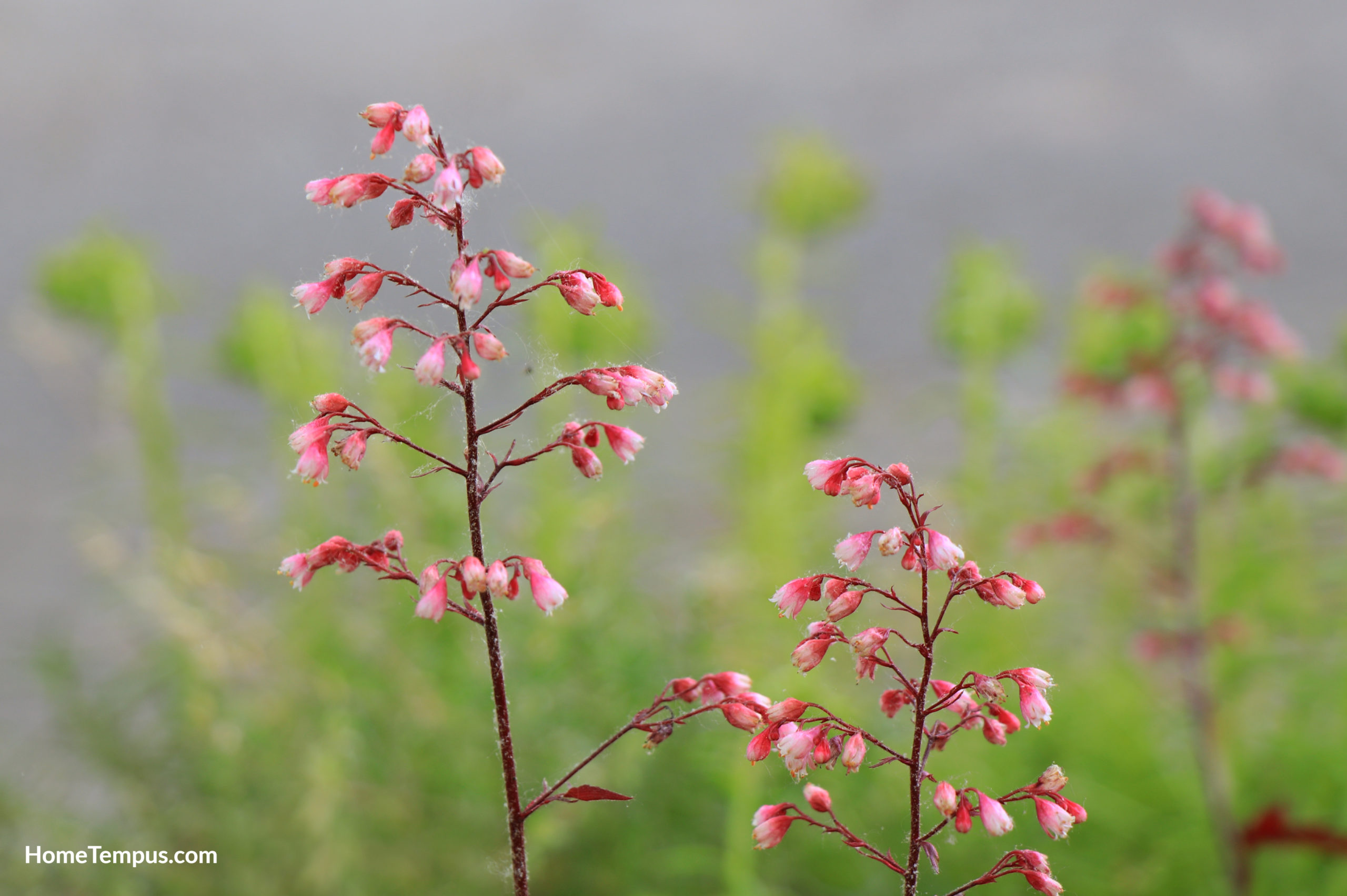
The coral bell has intensely-colored bell-shaped blooms that flower from late spring to early summer. The colors vary from light pink and coral to deep red. They grow well in beds and containers, so take your pick!
Water: Weekly in summer and less in winter, drought-tolerant
Sun: Any, full sun or no sun
Soil pH: 6 – 7
29. Corydalis (Corydalis)
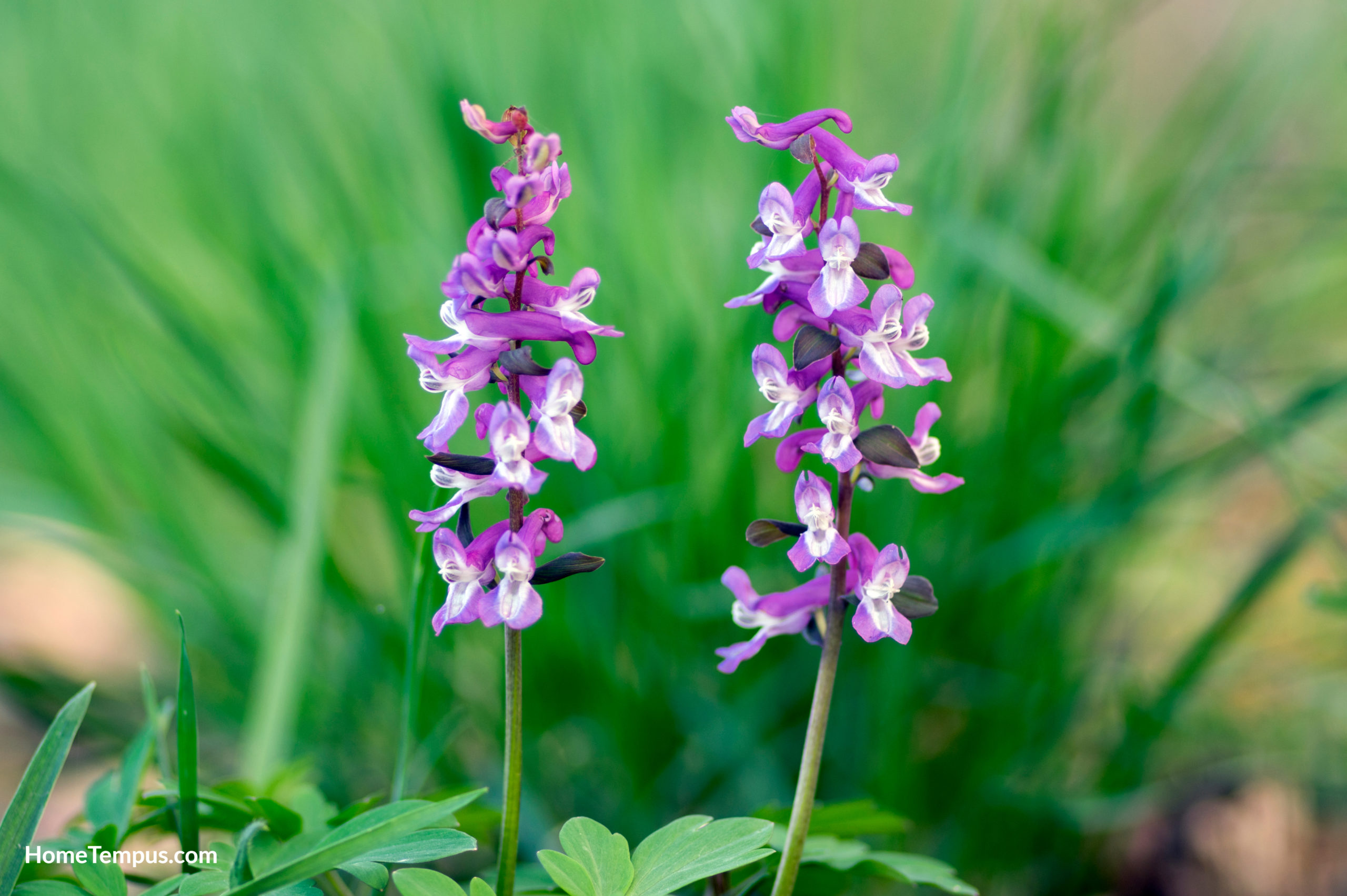
There are approximately 300 species of corydalis but in American gardens, but the blue and yellow varieties are most common. They are fairly low-growing and work well as borders or in beds.
Therefore, they also make attractive edgings for walkways and do well between pavers or rocks.
Water: Regular without soaking
Sun: Full sun or partial shade
Soil pH: 5 – 7
30. Cosmos (Cosmos Bipinnatus)
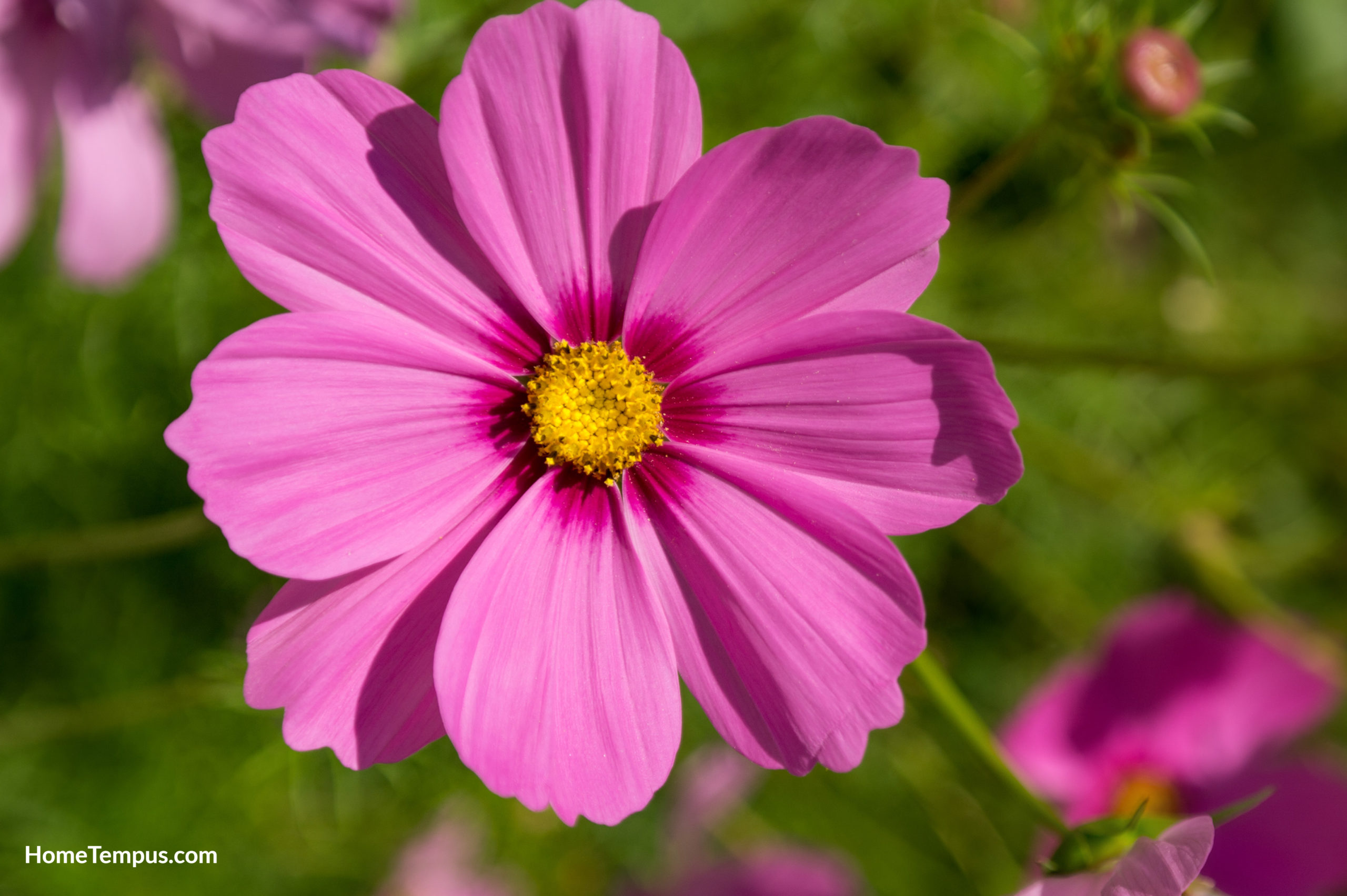
Cosmos is a beautiful plant and it produces 3- to 5-inch-wide daisy-like flowers in a variety of colors. So, the most common colors include pink, orange, red, maroon, white, and yellow.
They can grow quite tall and do equally well in beds or pots. Because of this, they also make beautiful cut flower arrangements.
Water: Regularly until established
Sun: Full sun
Soil pH: 6 – 6.8
31. Cow Parsley (Anthriscus sylvestris)
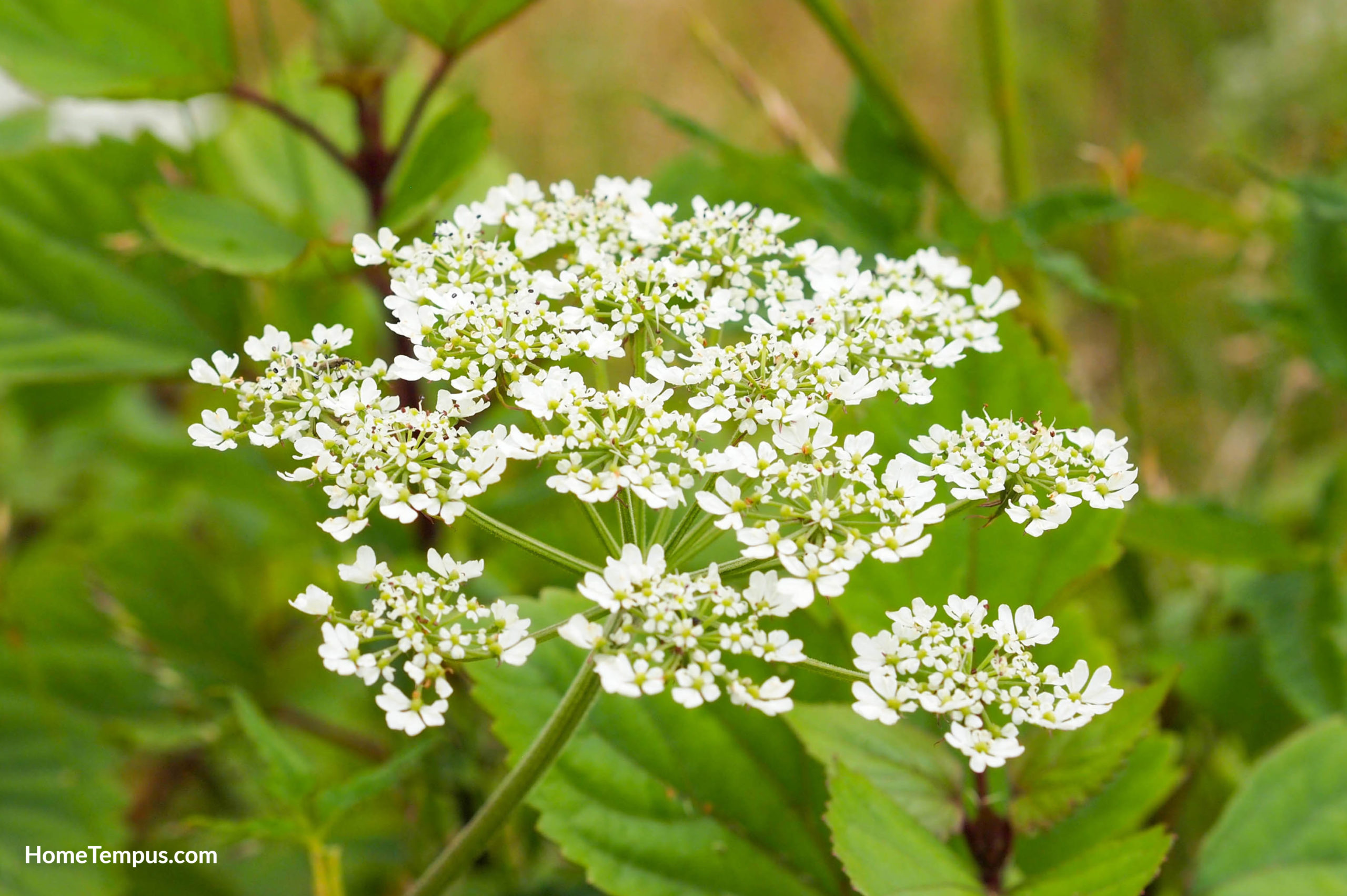
Cow’s parsley is also known as Queen Anne’s lace and produces tiny, delicate white flower clusters. As the name suggests, it is edible and tastes similar to regular parsley.
But be cautious as the cow parsley plant looks very similar to poison hemlock, which is definitely not edible.
Water: Half cup of water every 9 days
Sun: Full sun or dappled shade
Soil pH: 7
32. Cowslip (Primula veris)
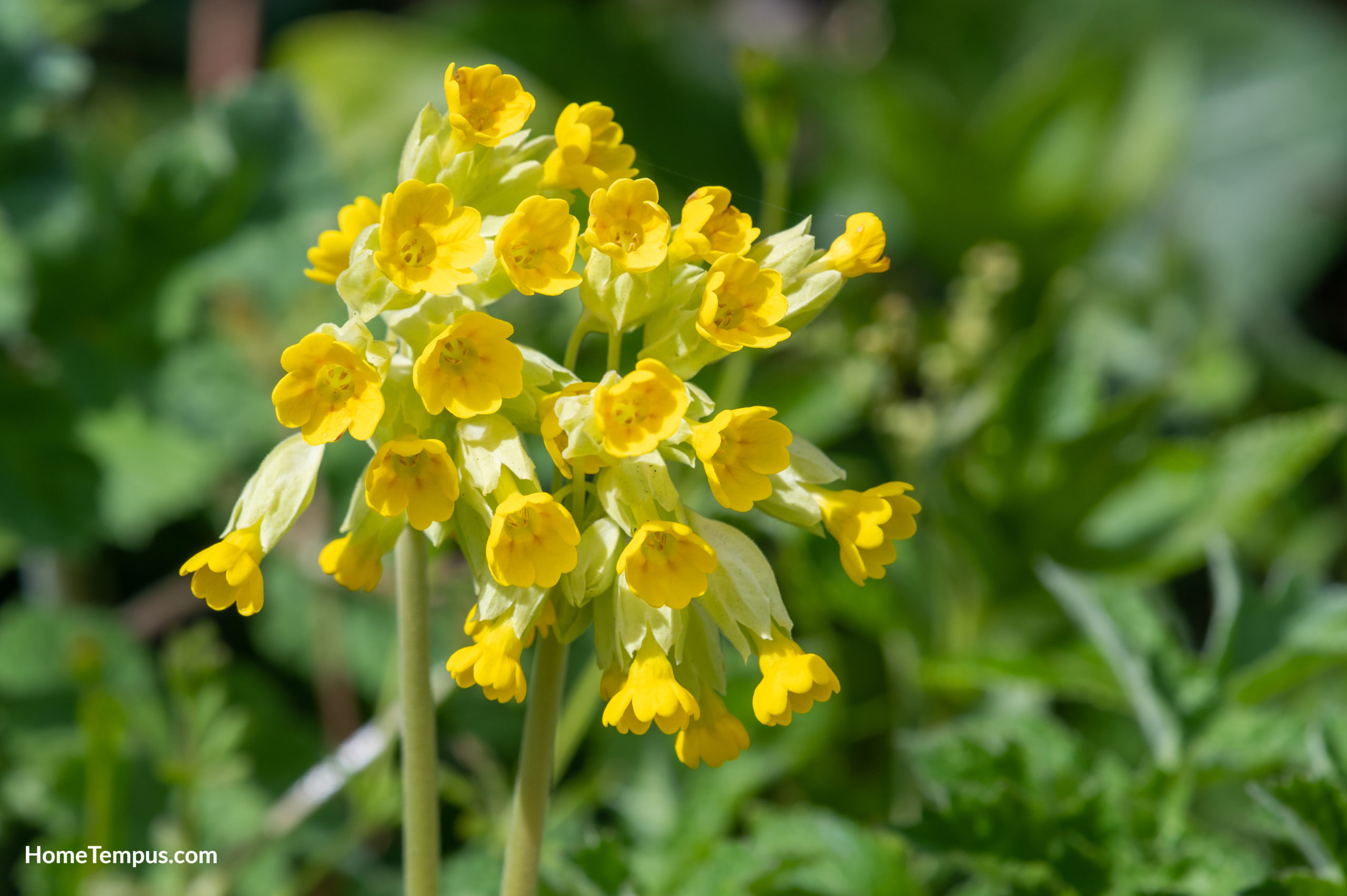
Cowslip is another plant with medicinal properties that can treat a sore throat, blocked nose, and bronchitis. It has deep green leaves and delicate yellow flowers on long stalks.
It smells like apricot and a tea brewed from it can treat insomnia and headaches.
Water: Fairly moist soil
Sun: Partial shade
Soil pH: Acidic, alkaline, or neutral
33. Crane’s Bill (Geranium)
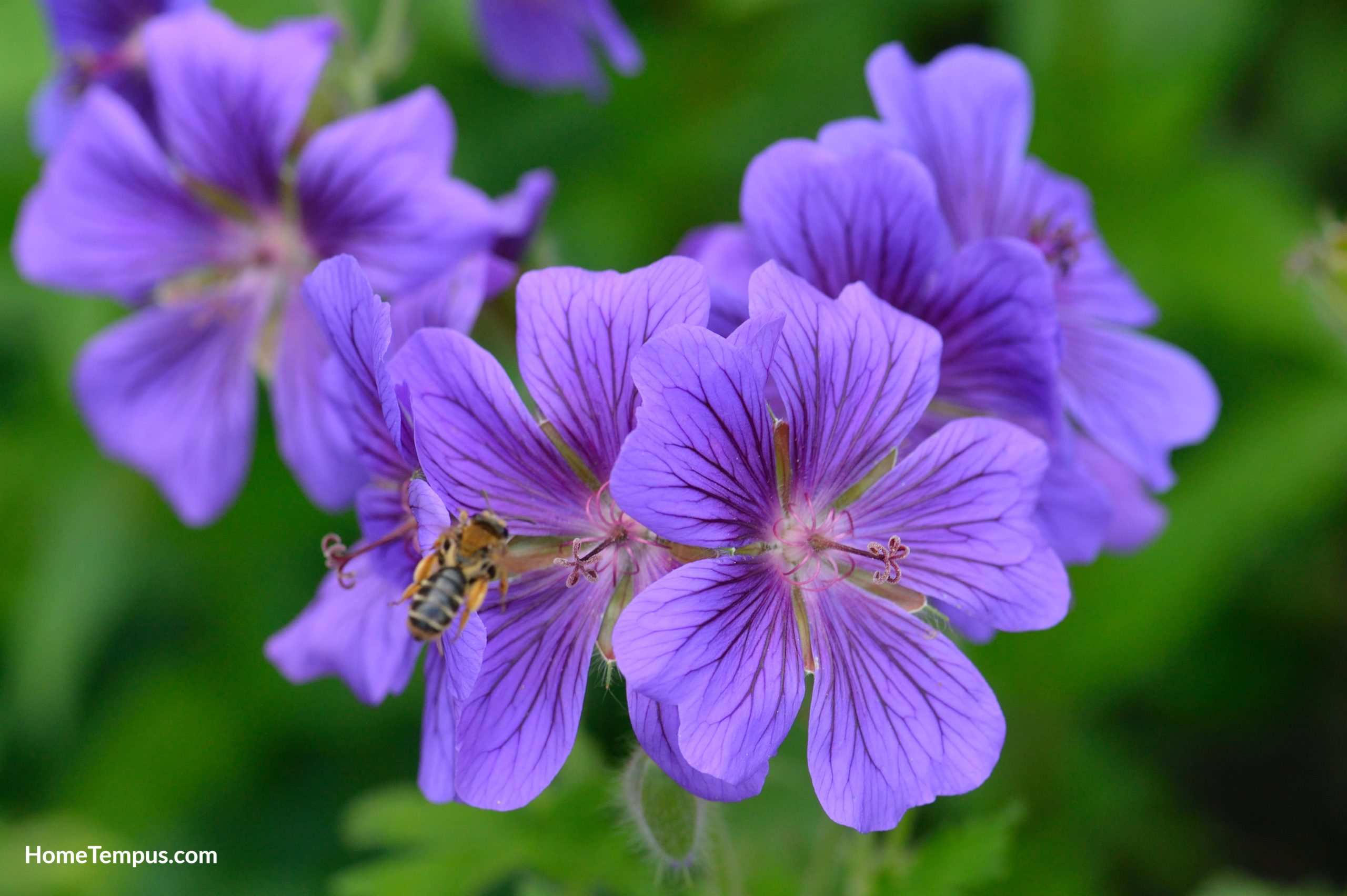
This perennial mounding plant boasts five-petal blooms in shades of white, pink, purple, and blue. They smell ever so slightly of citrus and are an excellent indoor or outdoor plant.
Because of this, they bring color to many homes in pots on window sills.
Water: Moist soil rich in humus
Sun: Light shade
Soil pH: 5.8 – 6.3
34. Crepe Myrtle (Lagerstroemia)
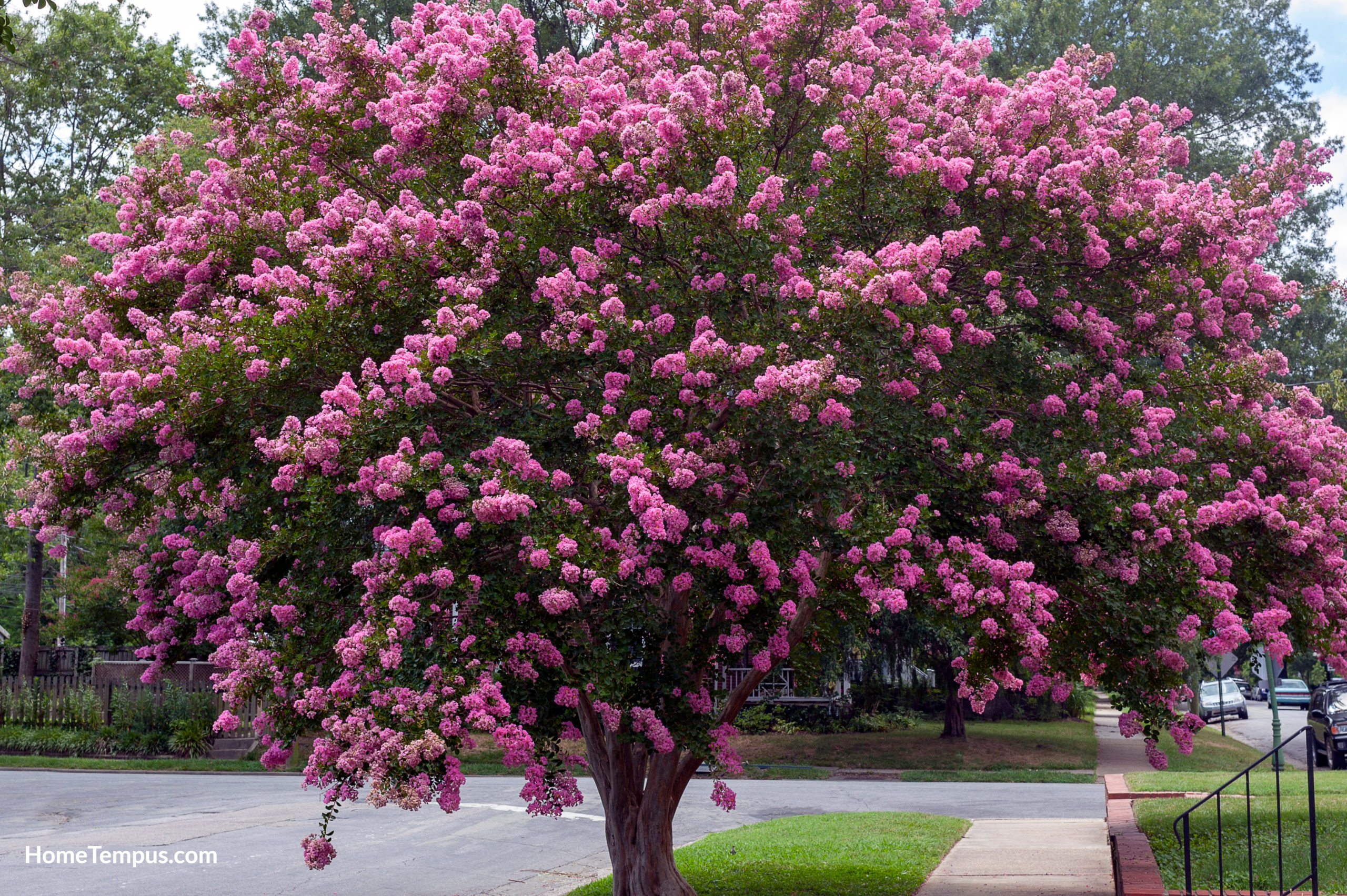
The crepe myrtle is not a flowering shrub or a bush however it is a tall and towering tree. It is a common plant in the South and they boast spectacular summer flowers and beautiful fall foliage.
You can get dwarf varieties of the tree or large specimens and the flowers range from pink to purple.
Water: One inch of water weekly
Sun: Full sun
Soil pH: 5 – 6.5
35. Cushion Spurge (Euphorbia epithymoides)
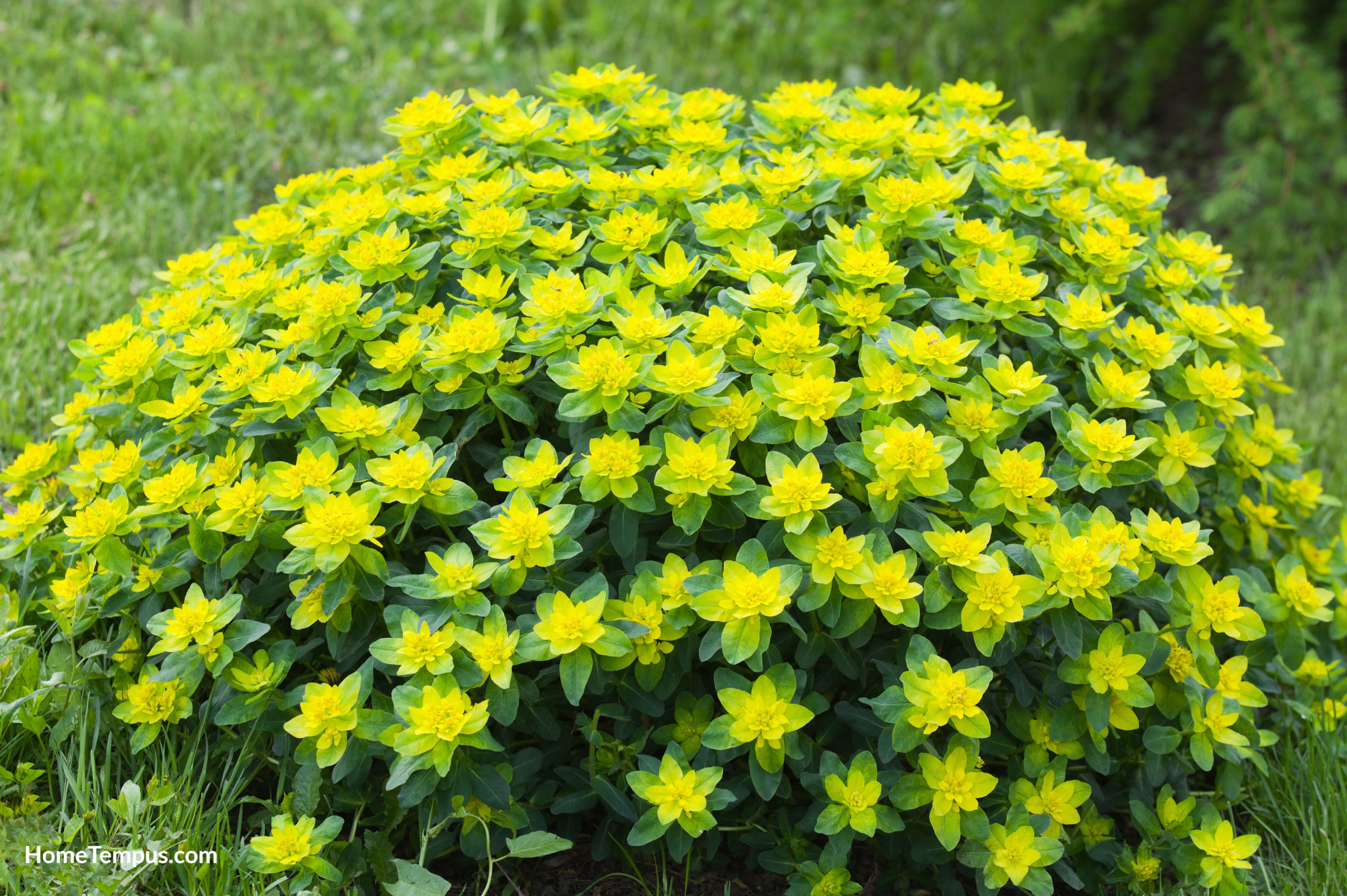
This bright and beautiful flowering plant is native to Libya, Turkey, and East, Middle, and Southeast Europe. It is a very showy plant and very good for borders. The flowers are slightly inconspicuous and light green in color.
Water: Moist, well-drained soil
Sun: Full sun to partial shade
Soil pH: Acidic, alkaline, or neutral
Be sure to check the pH of your soil and the conditions in your garden before settling on flowers that start with C to plant.

